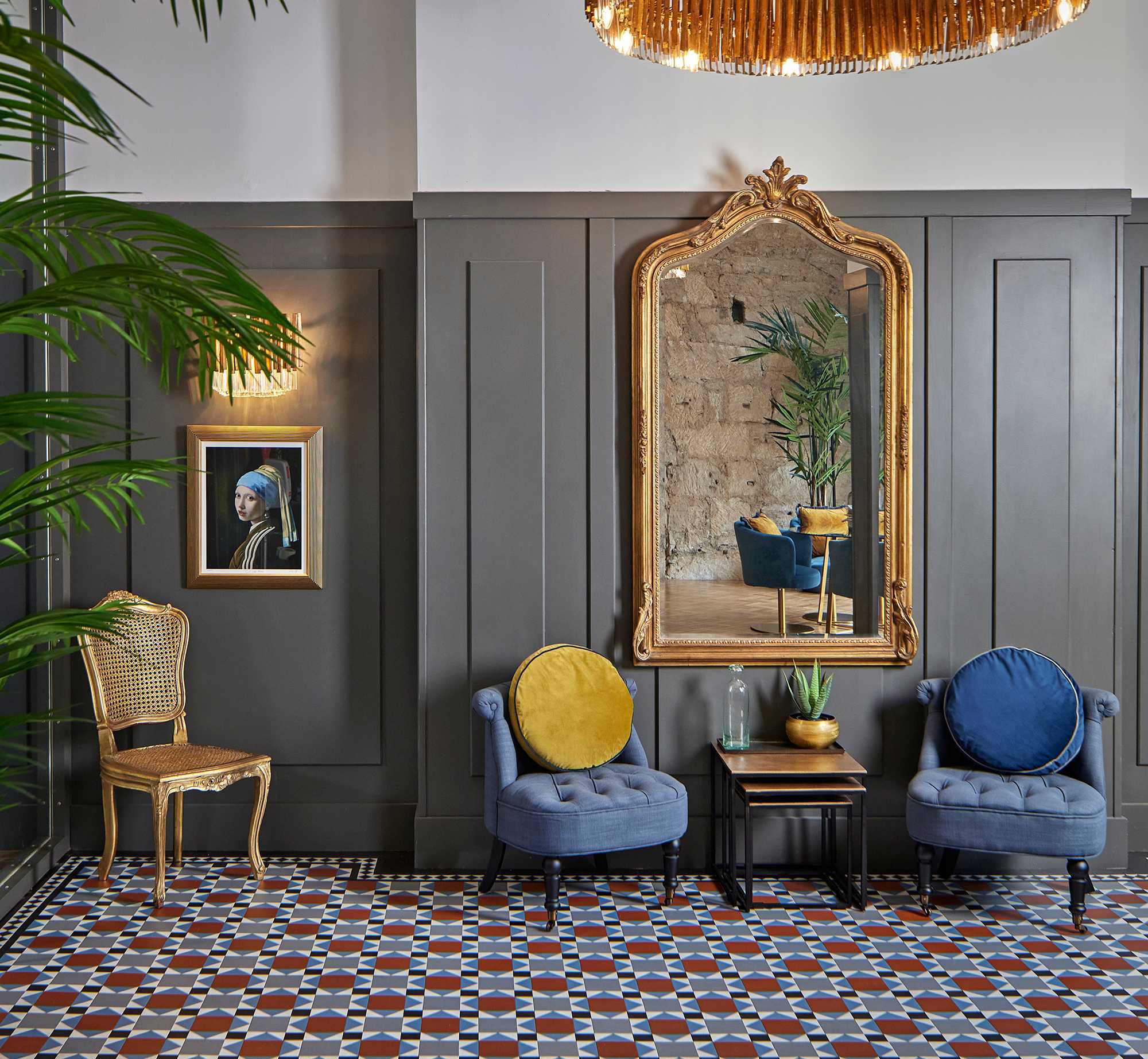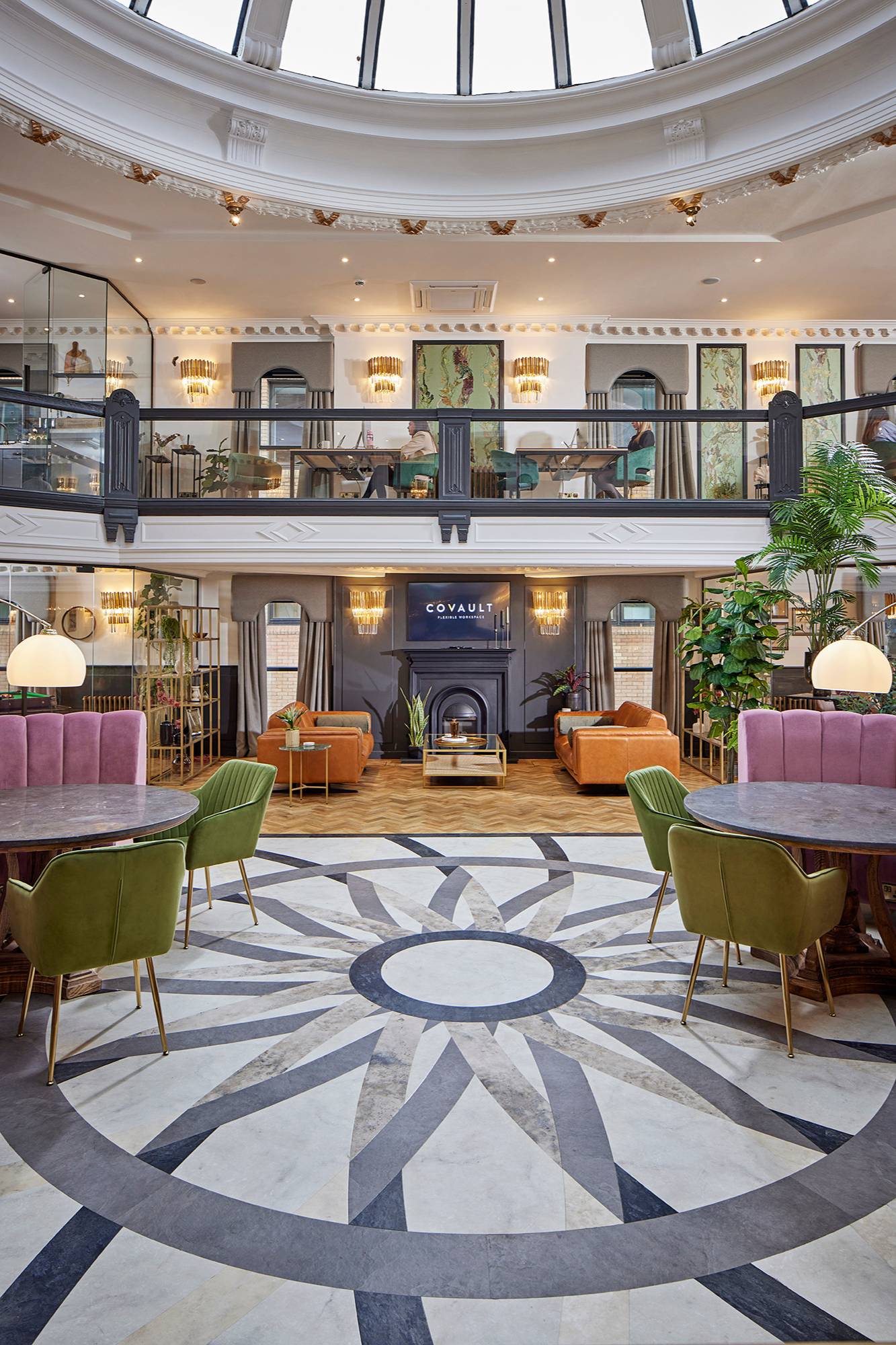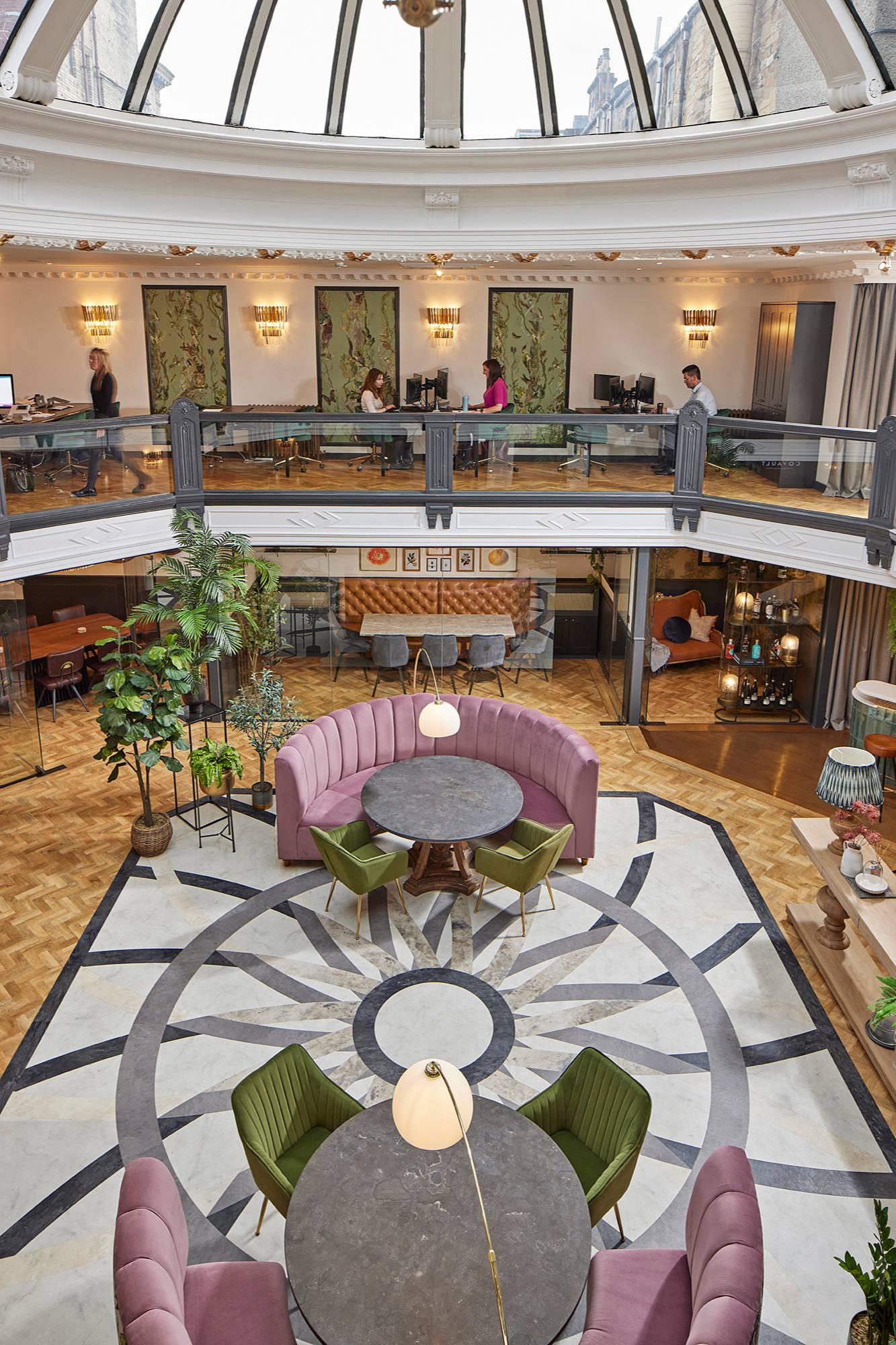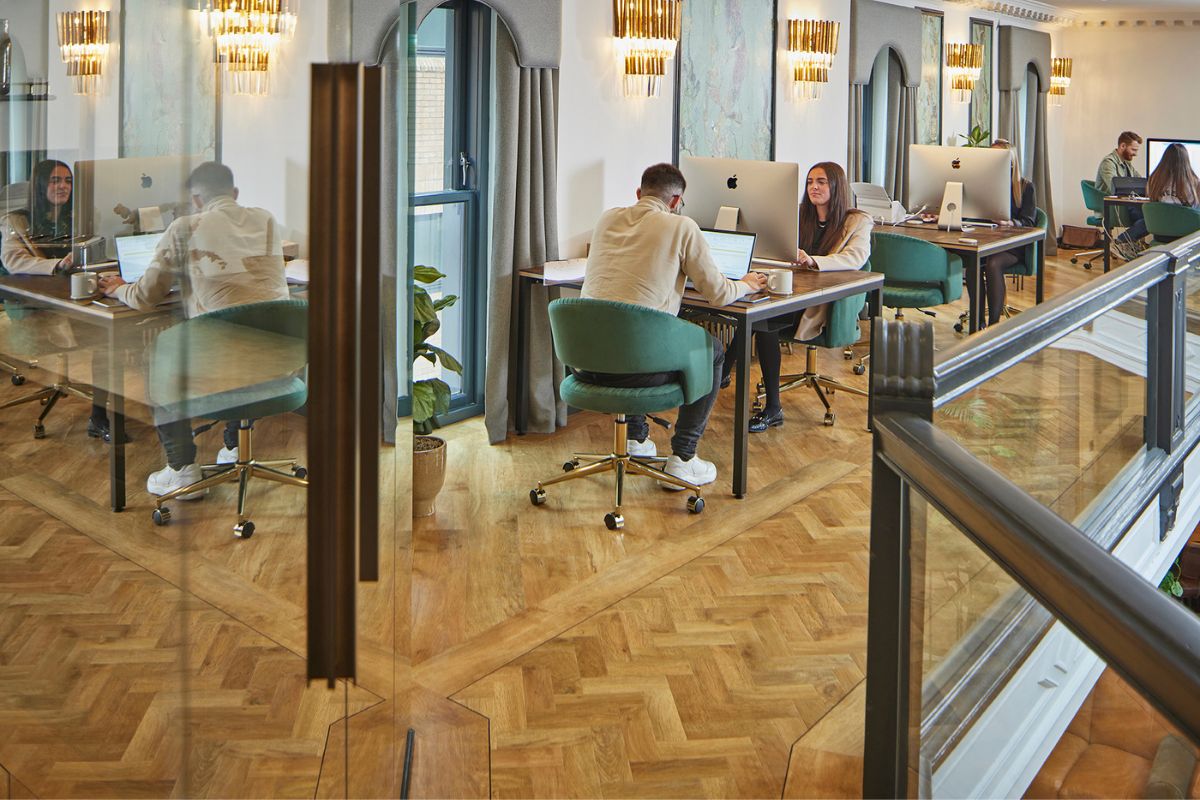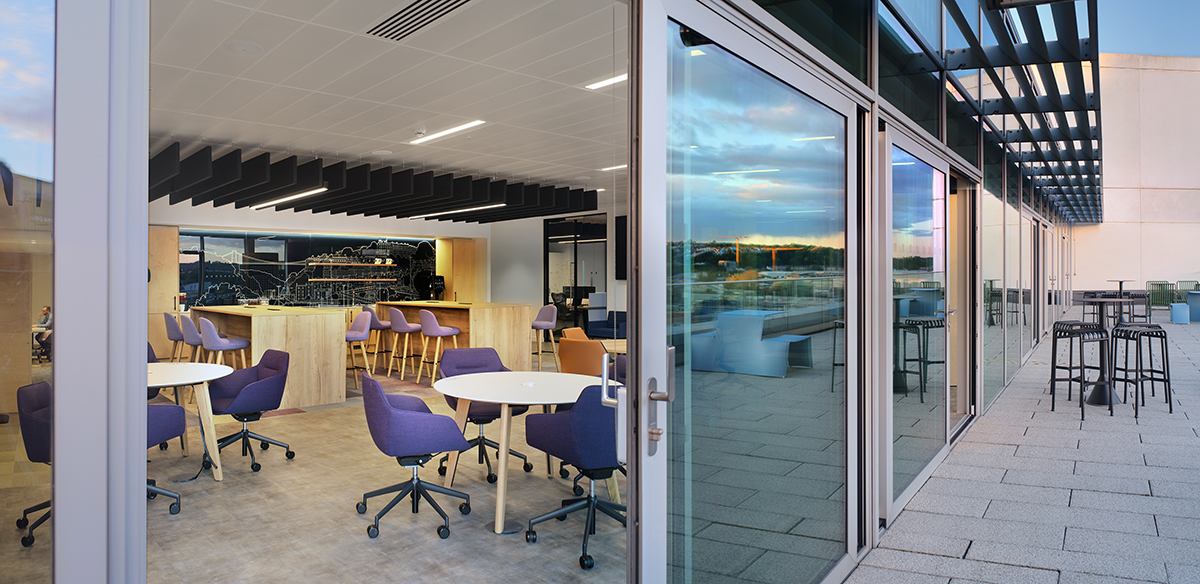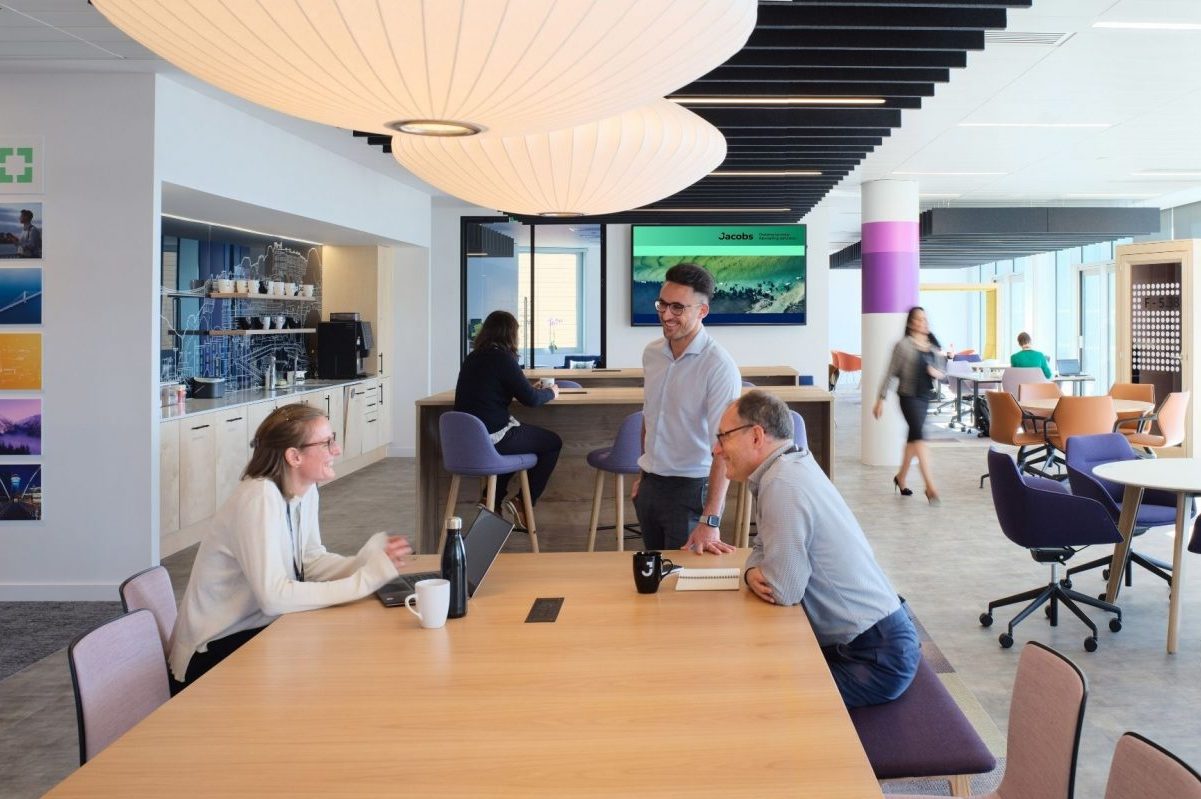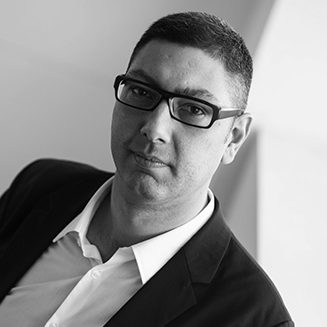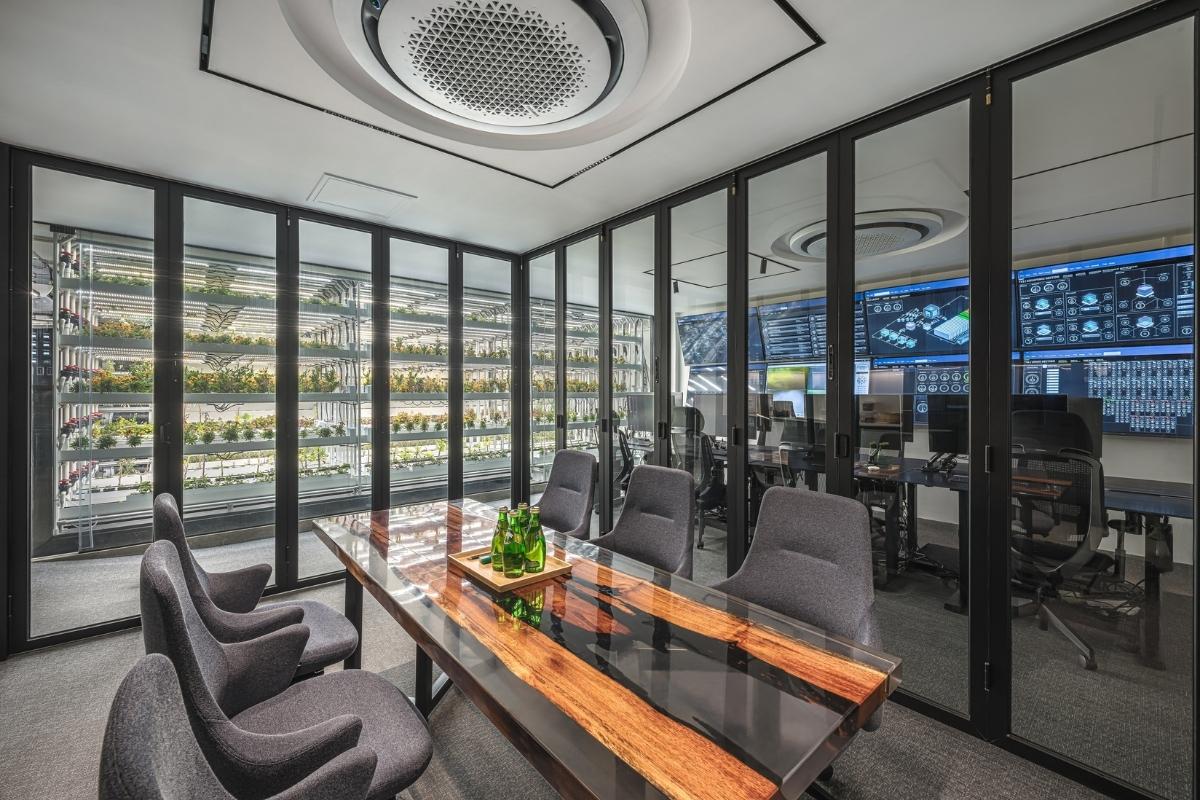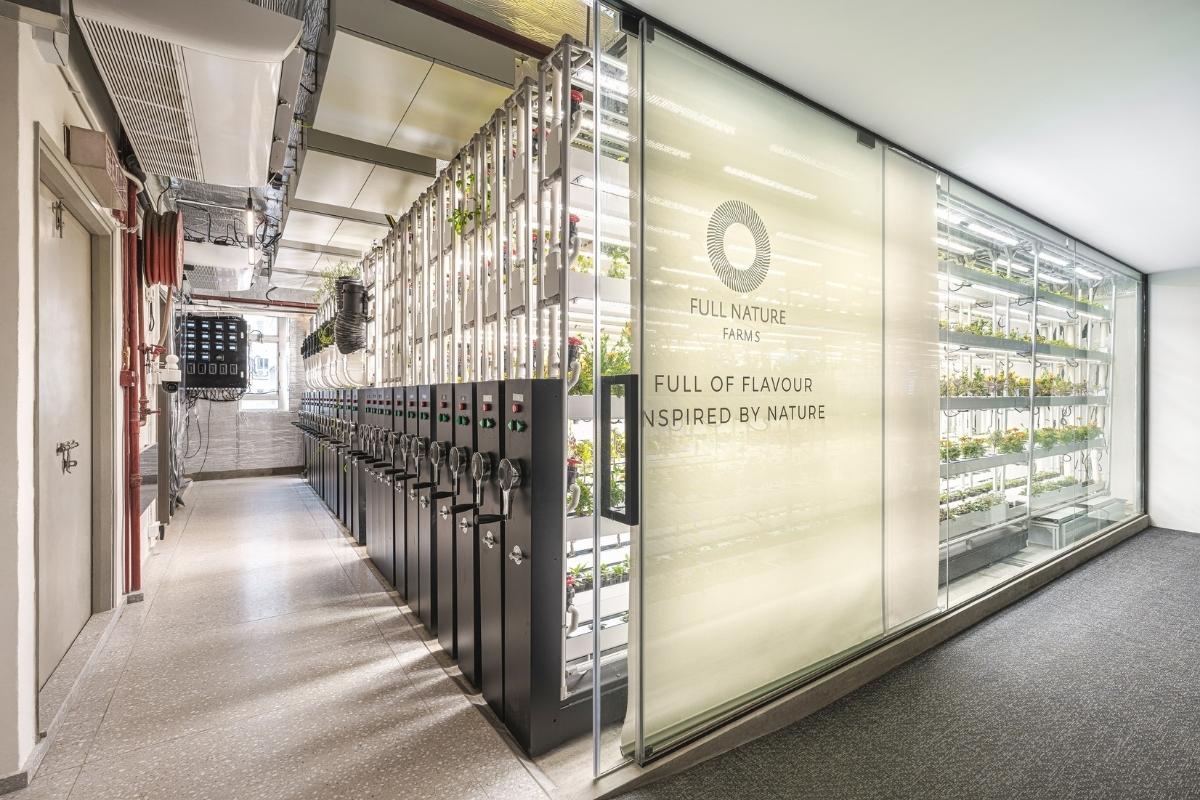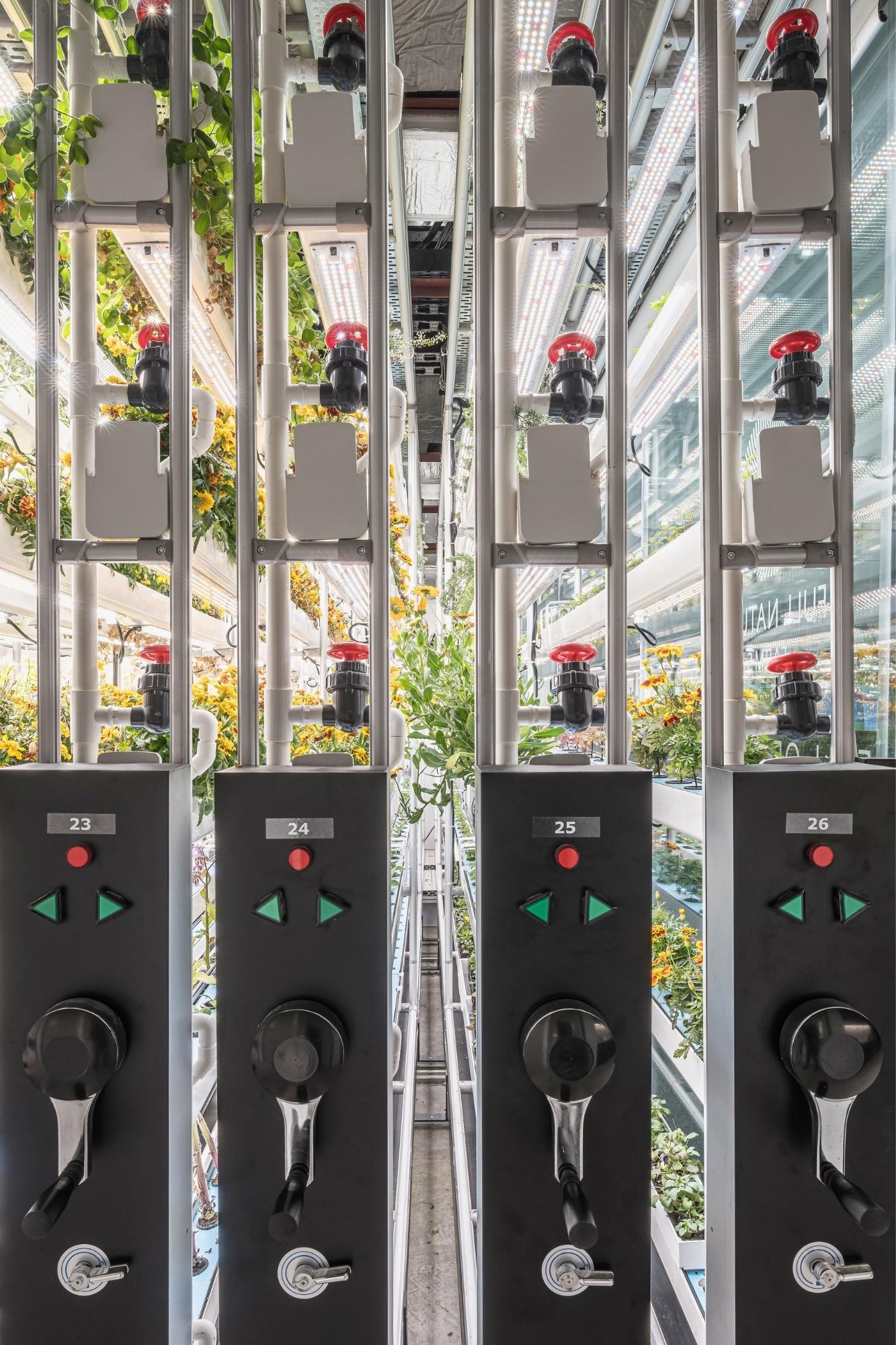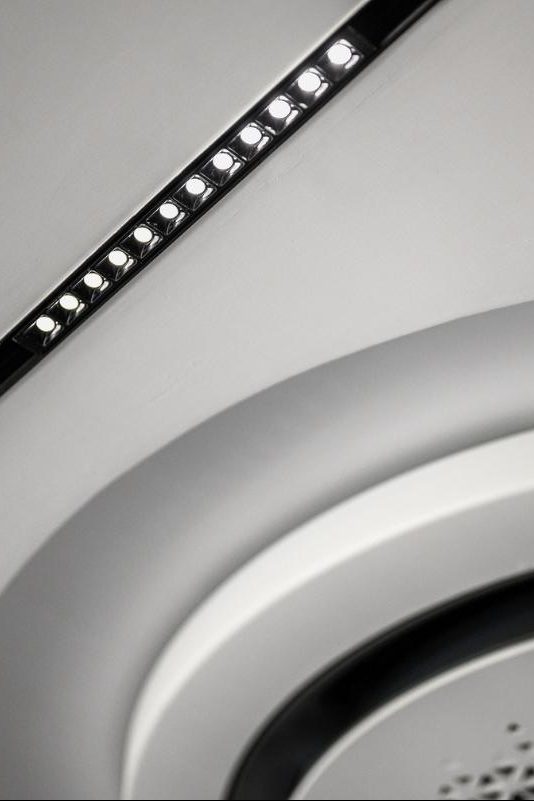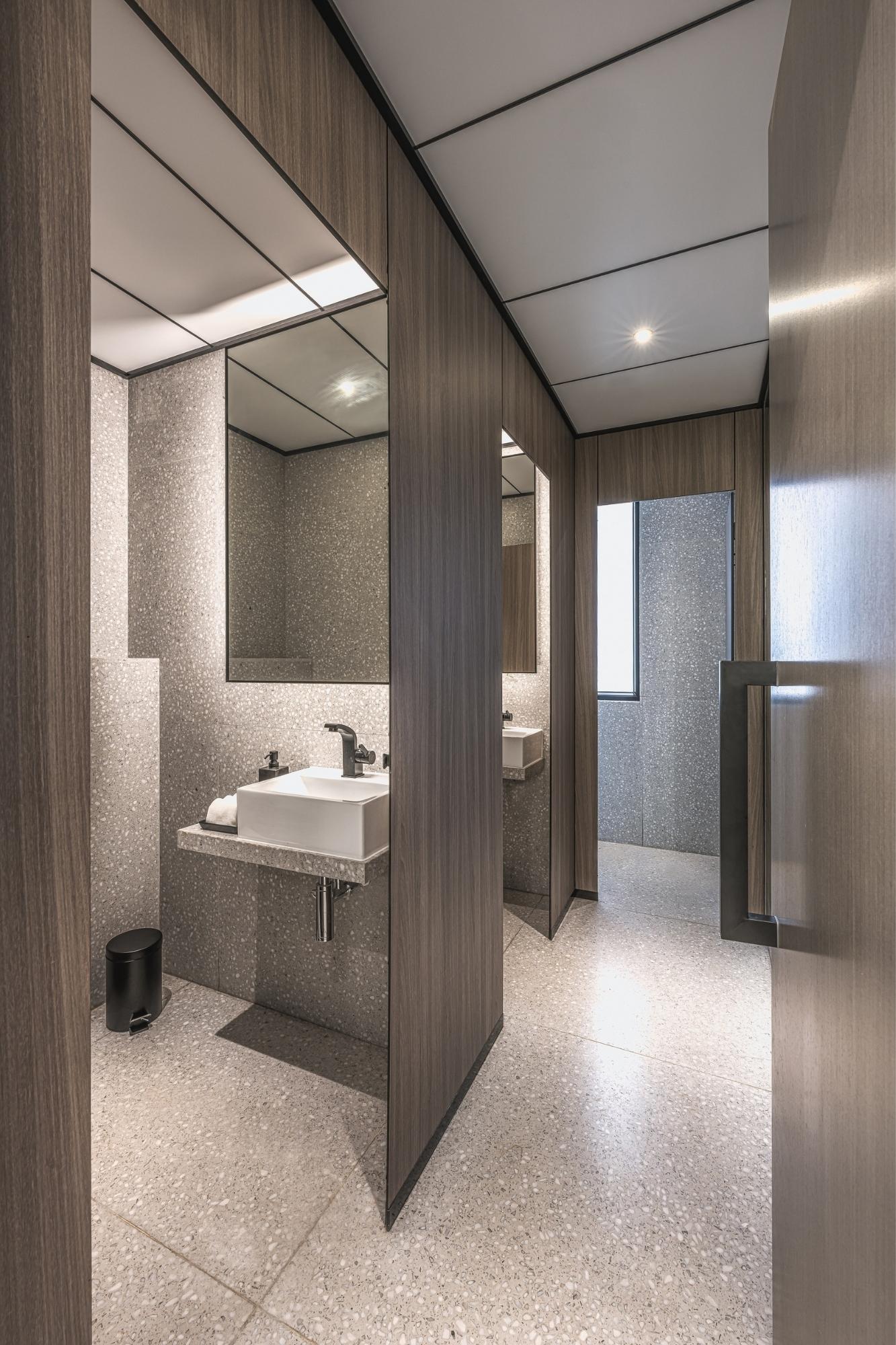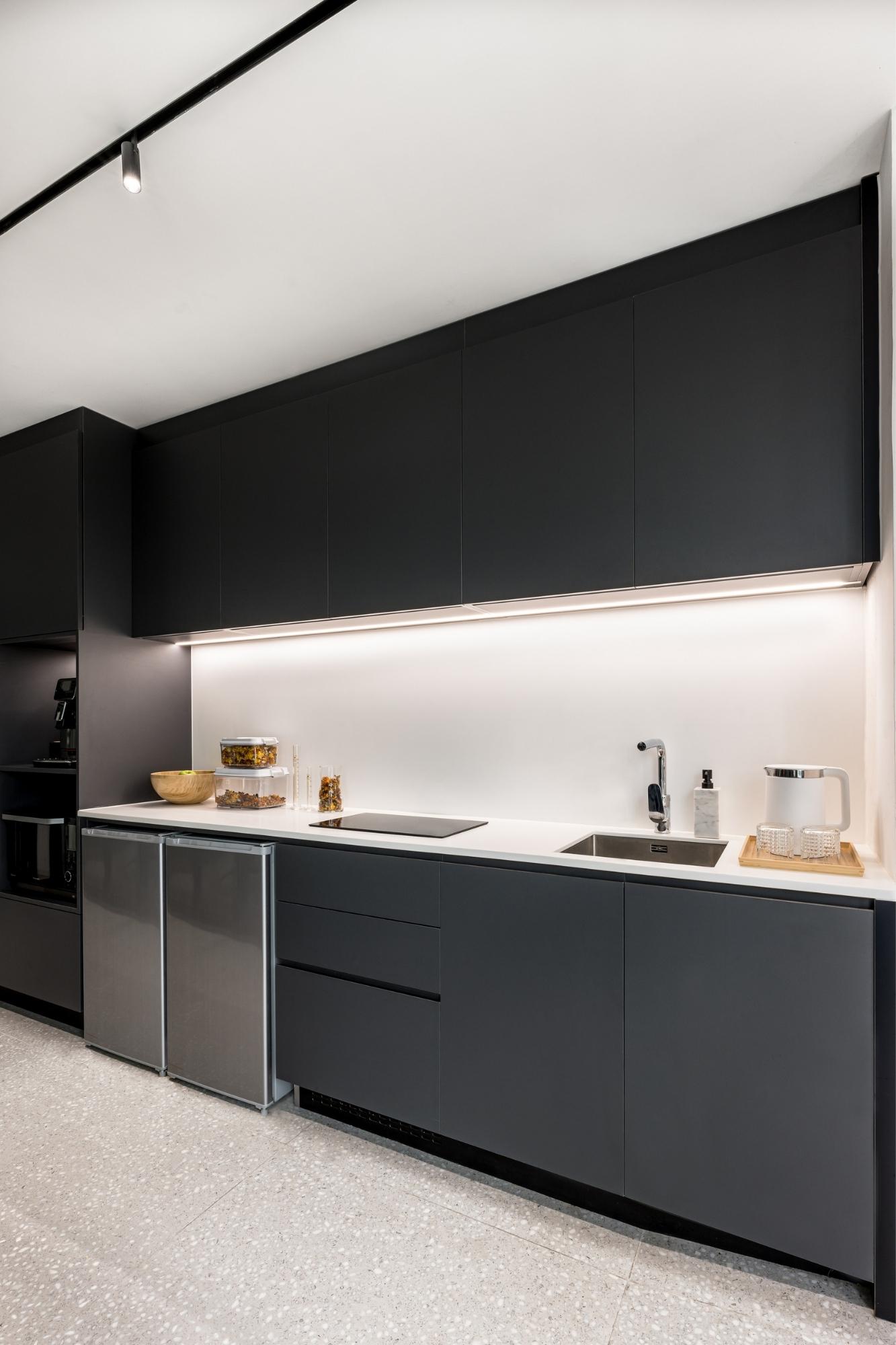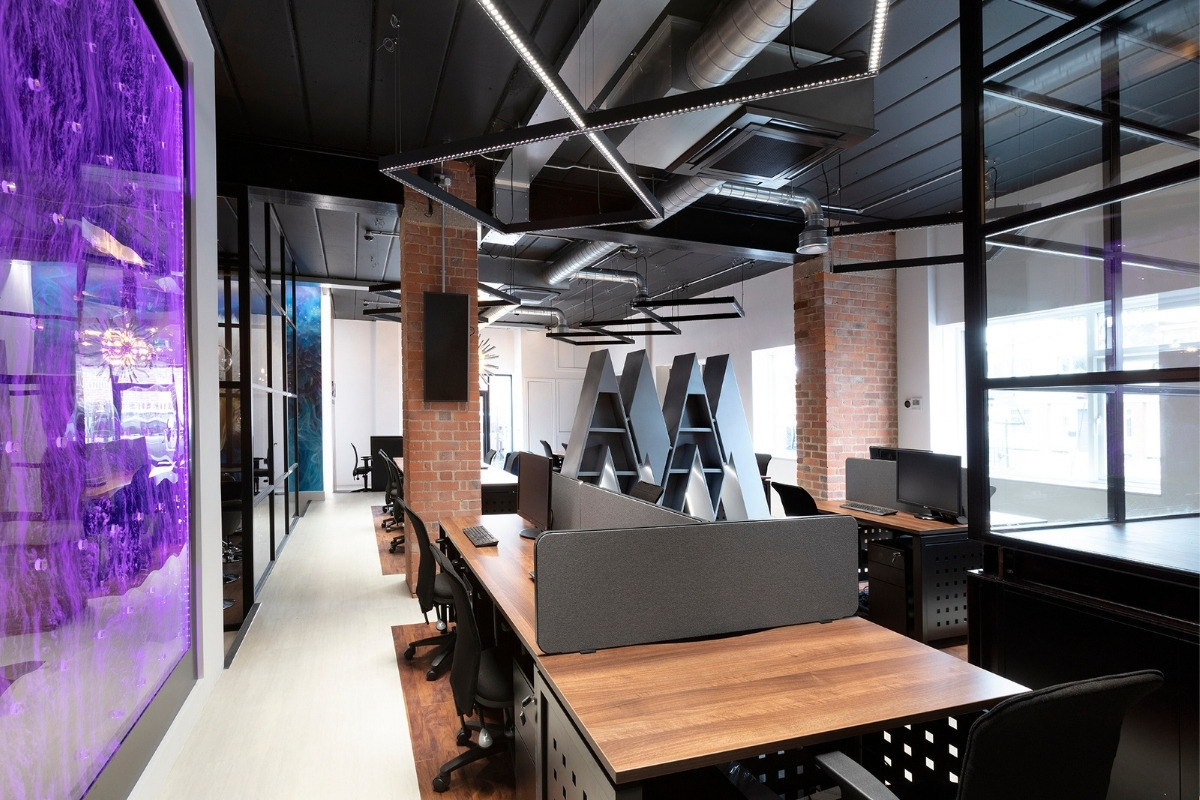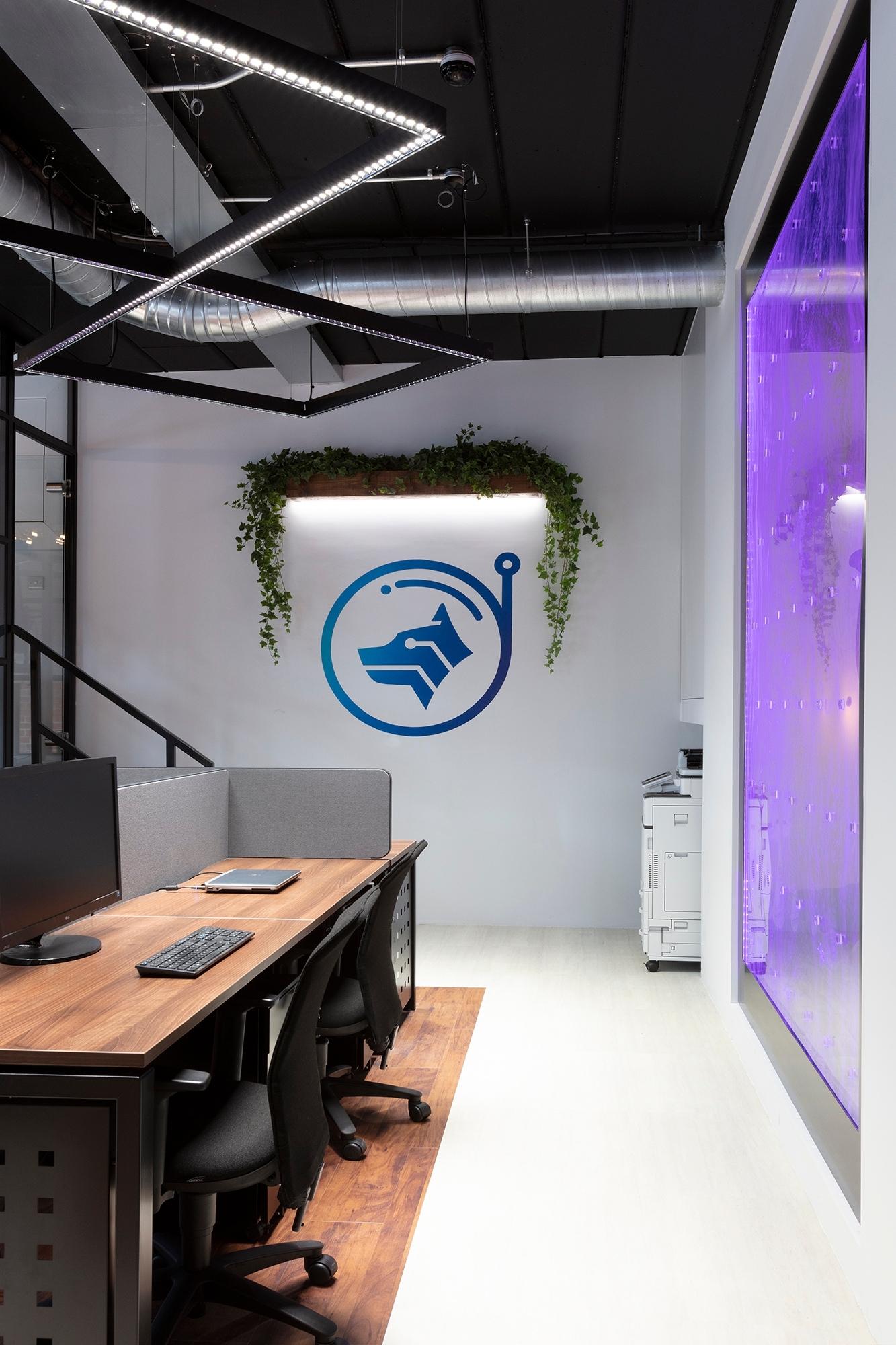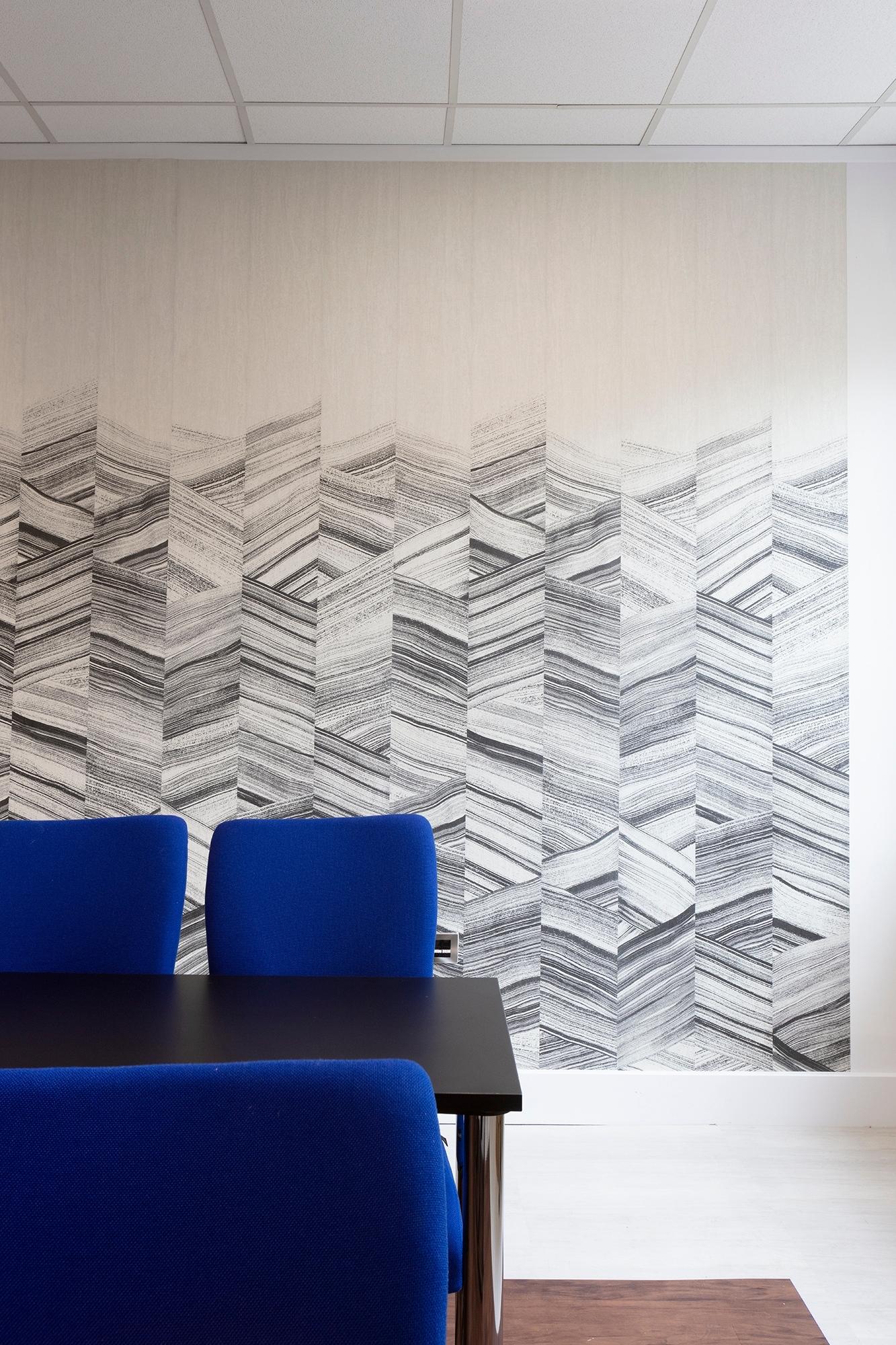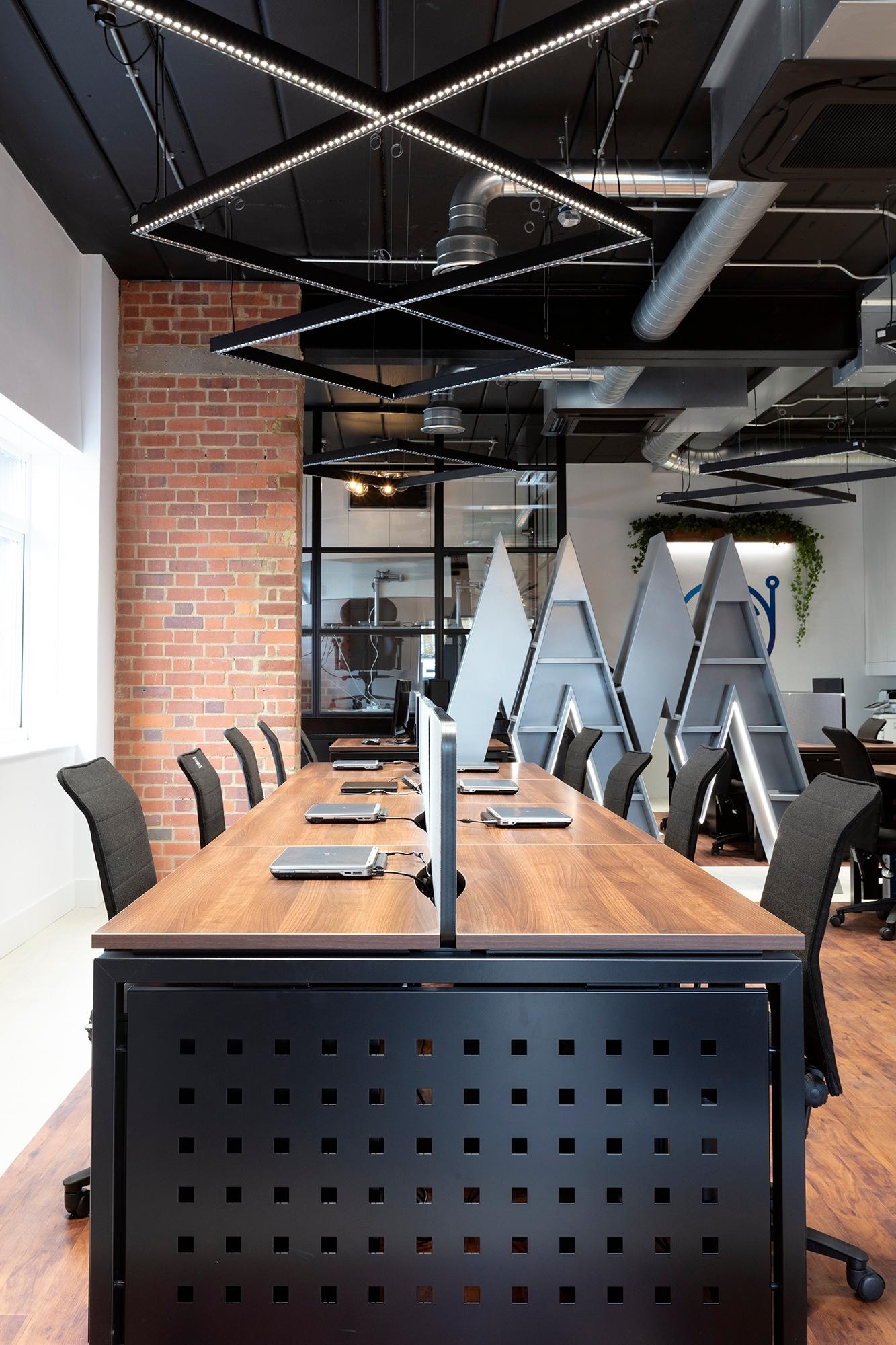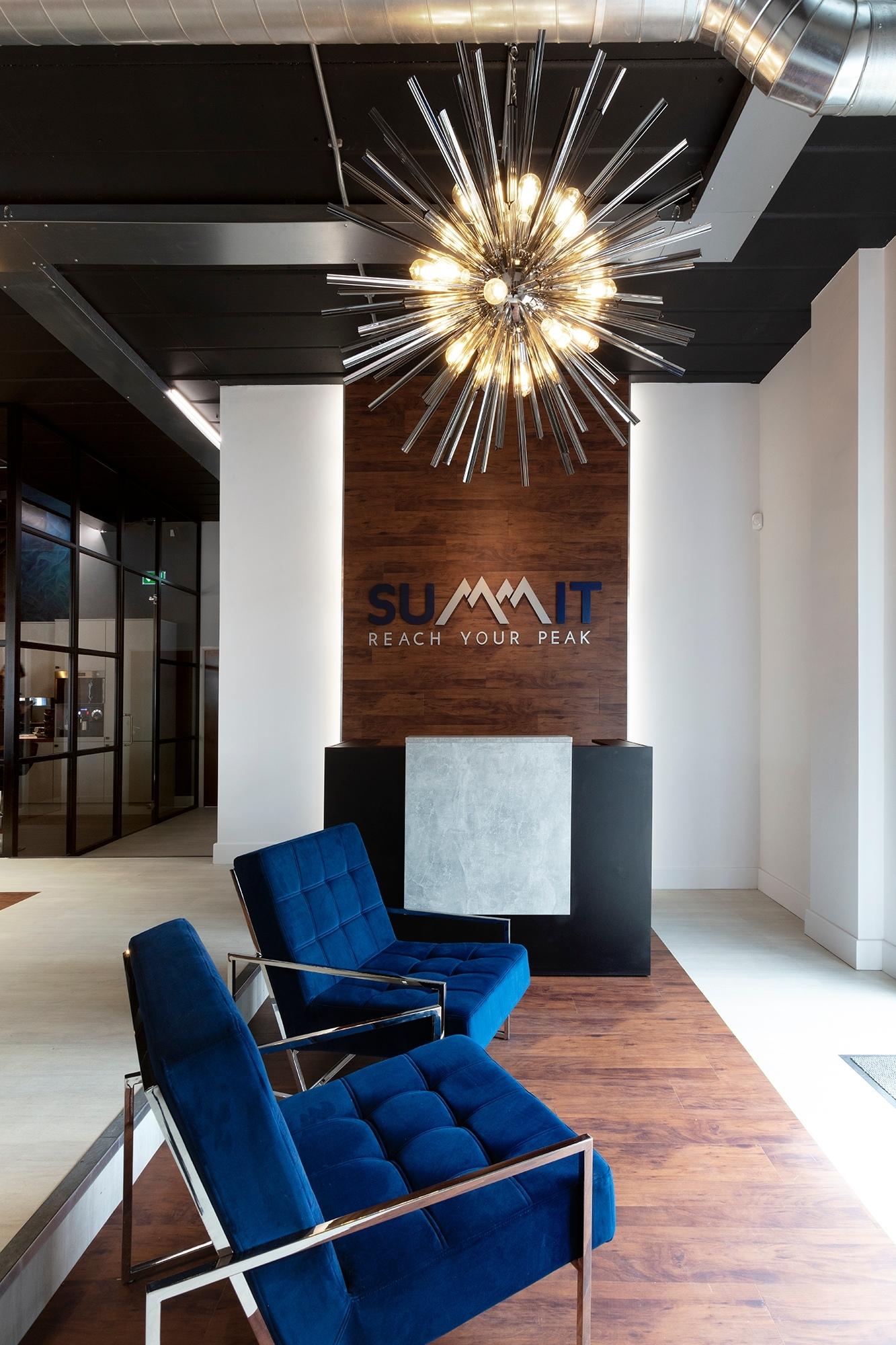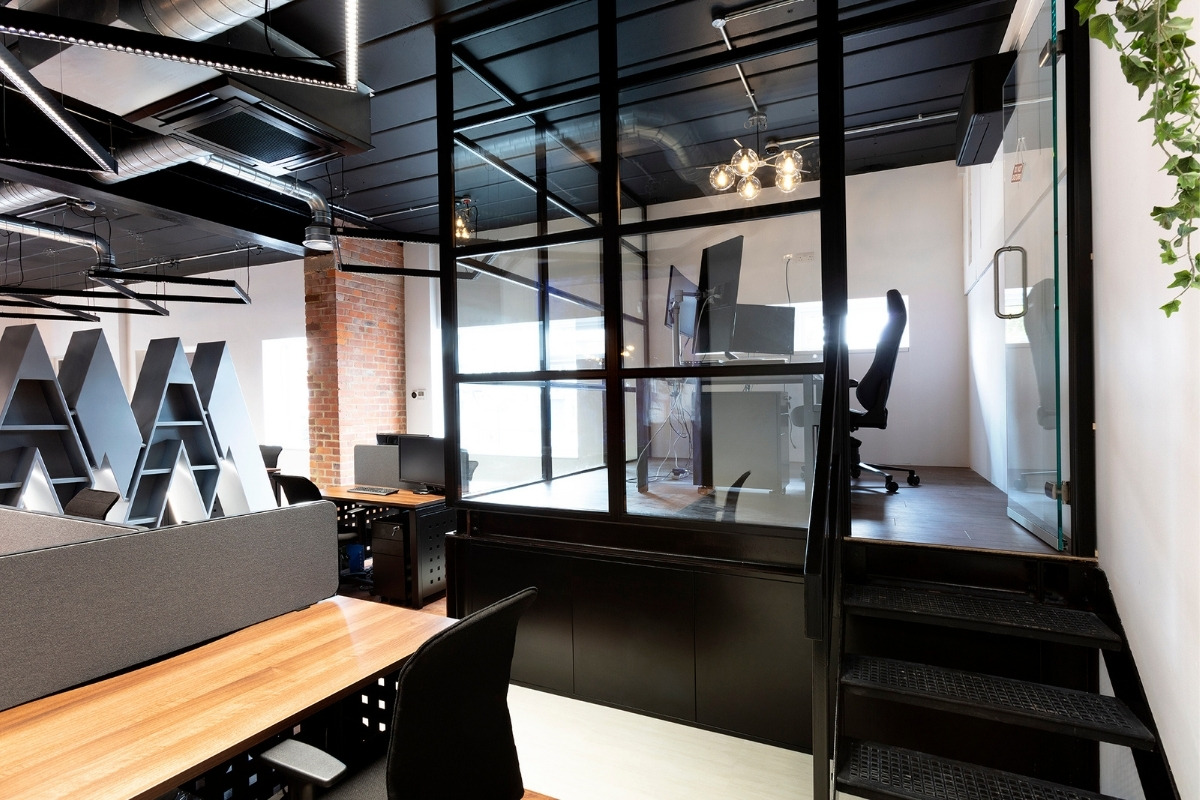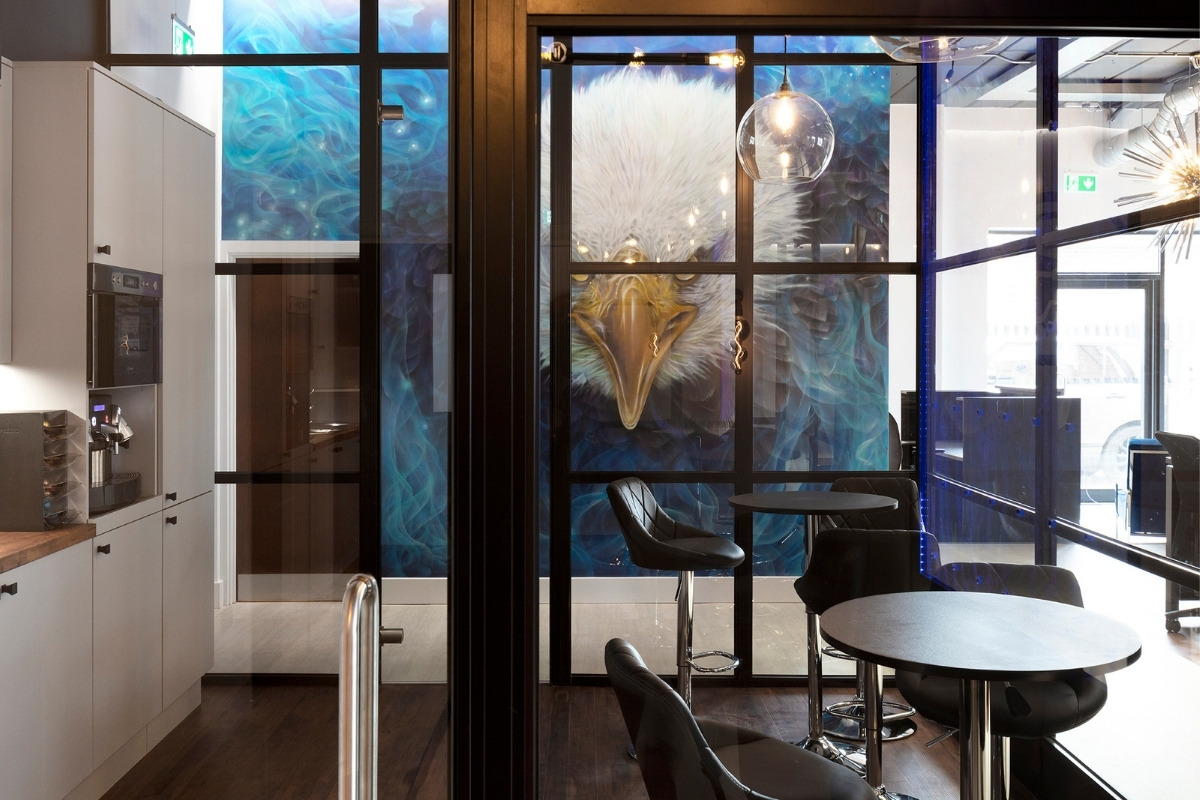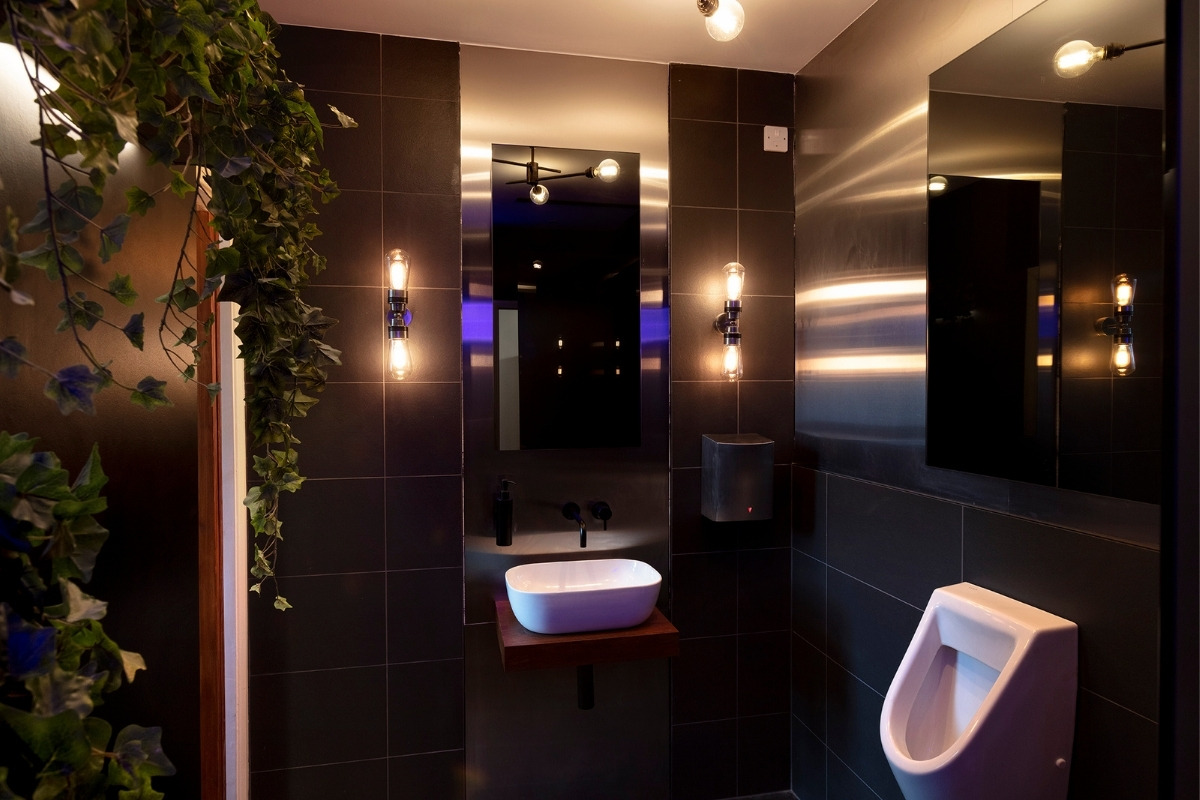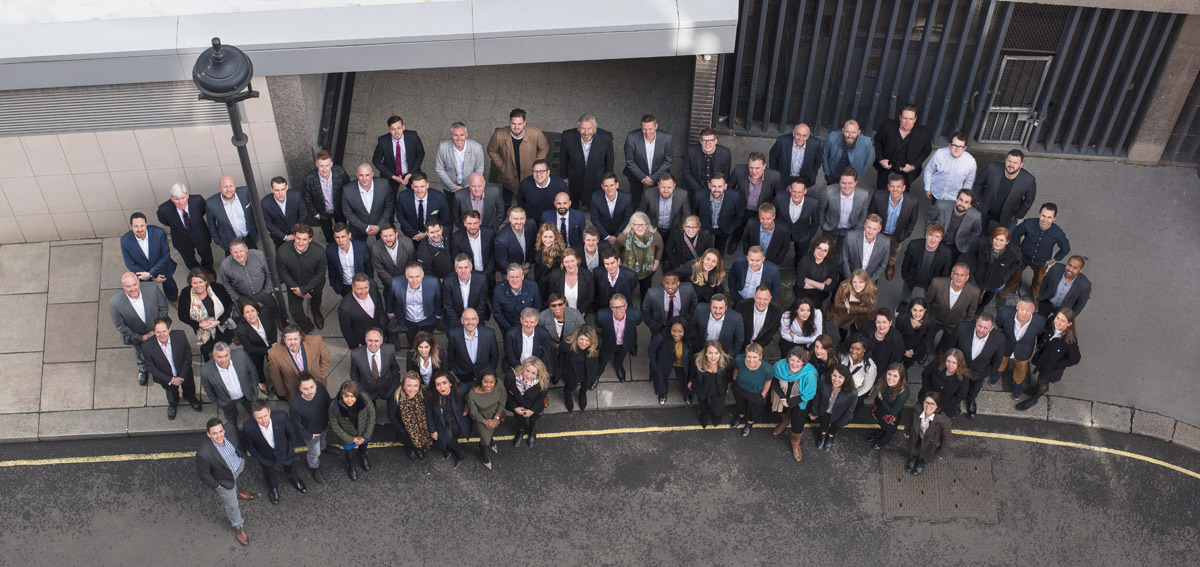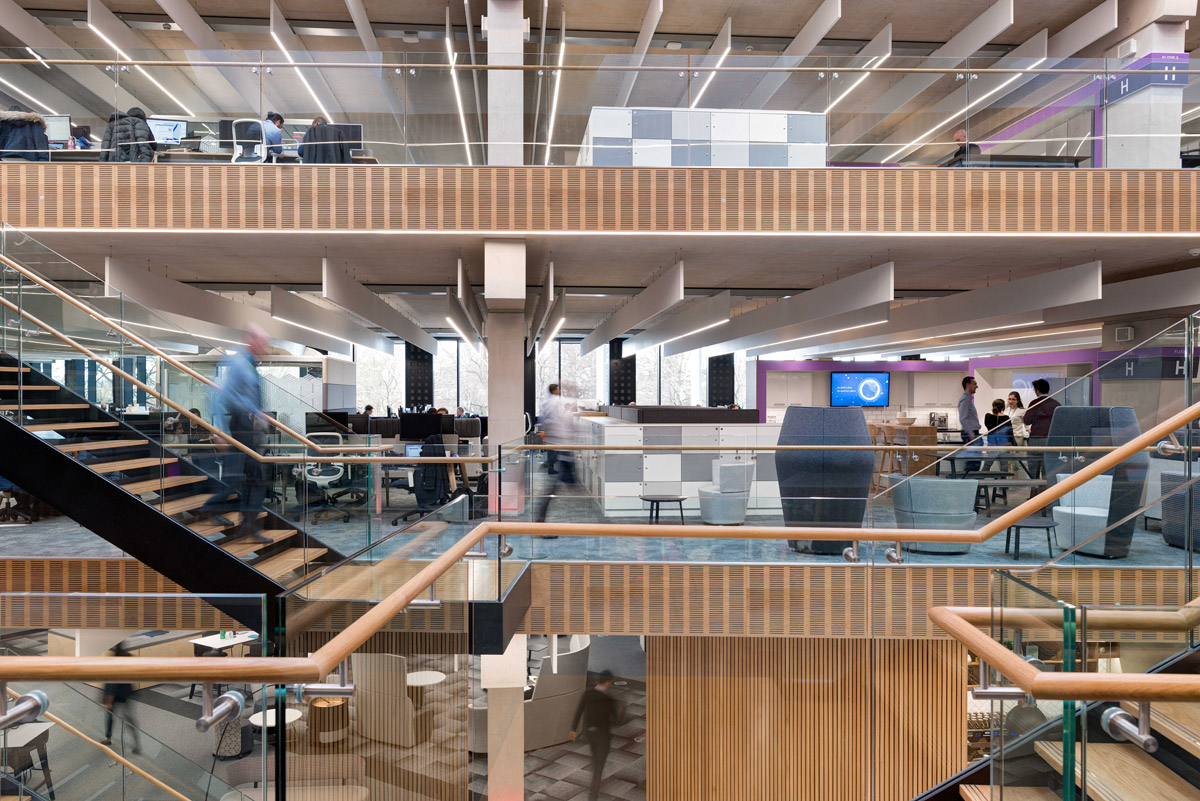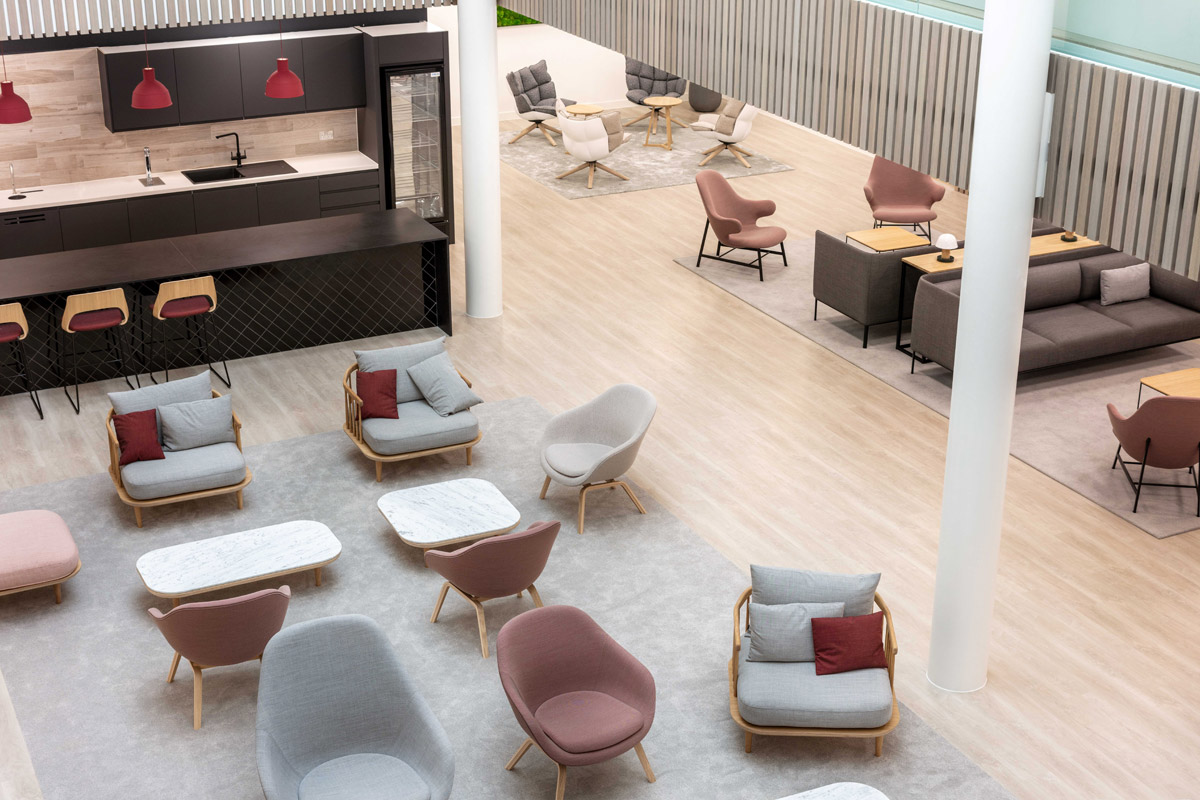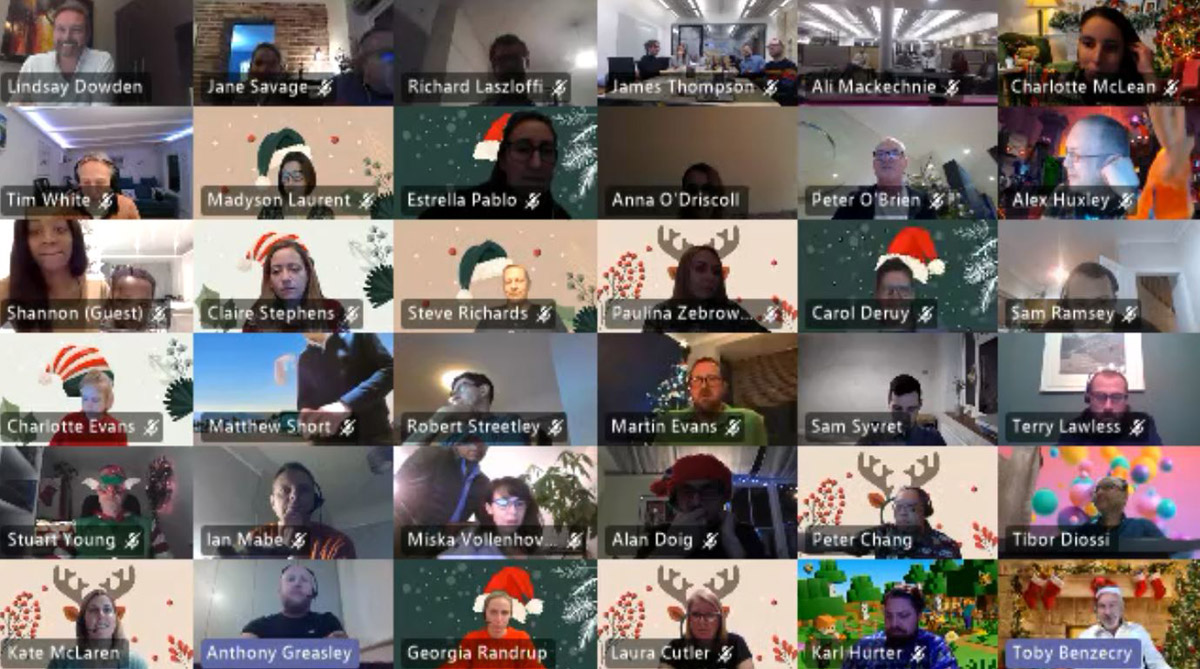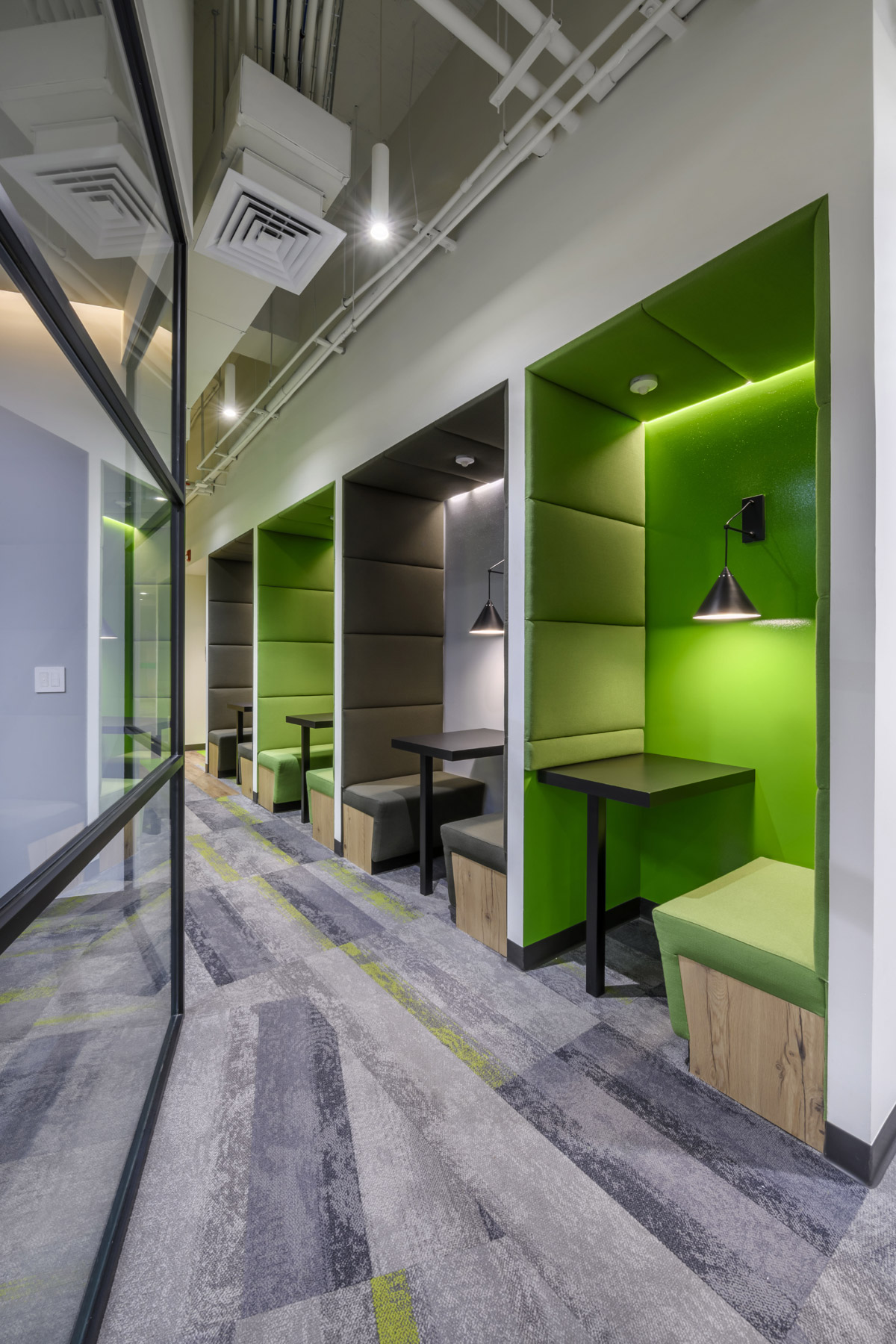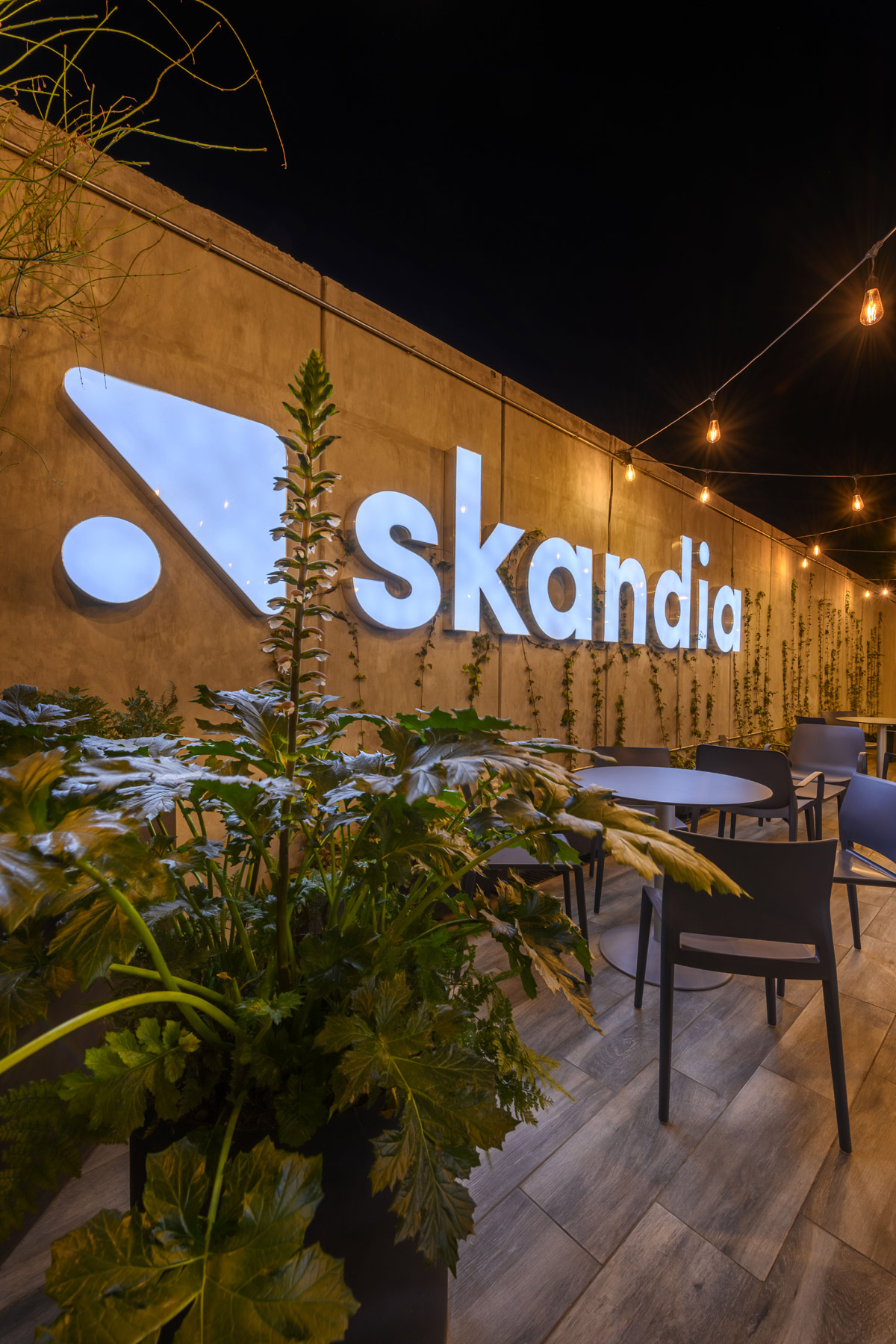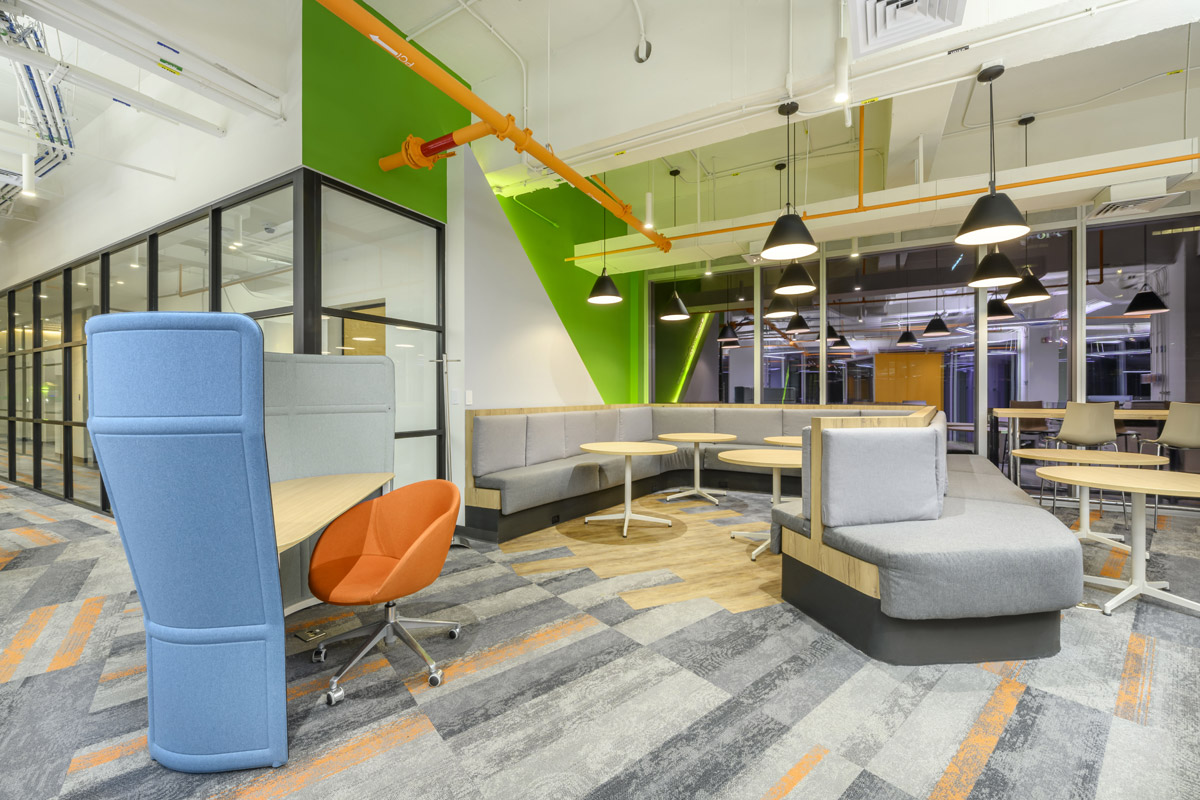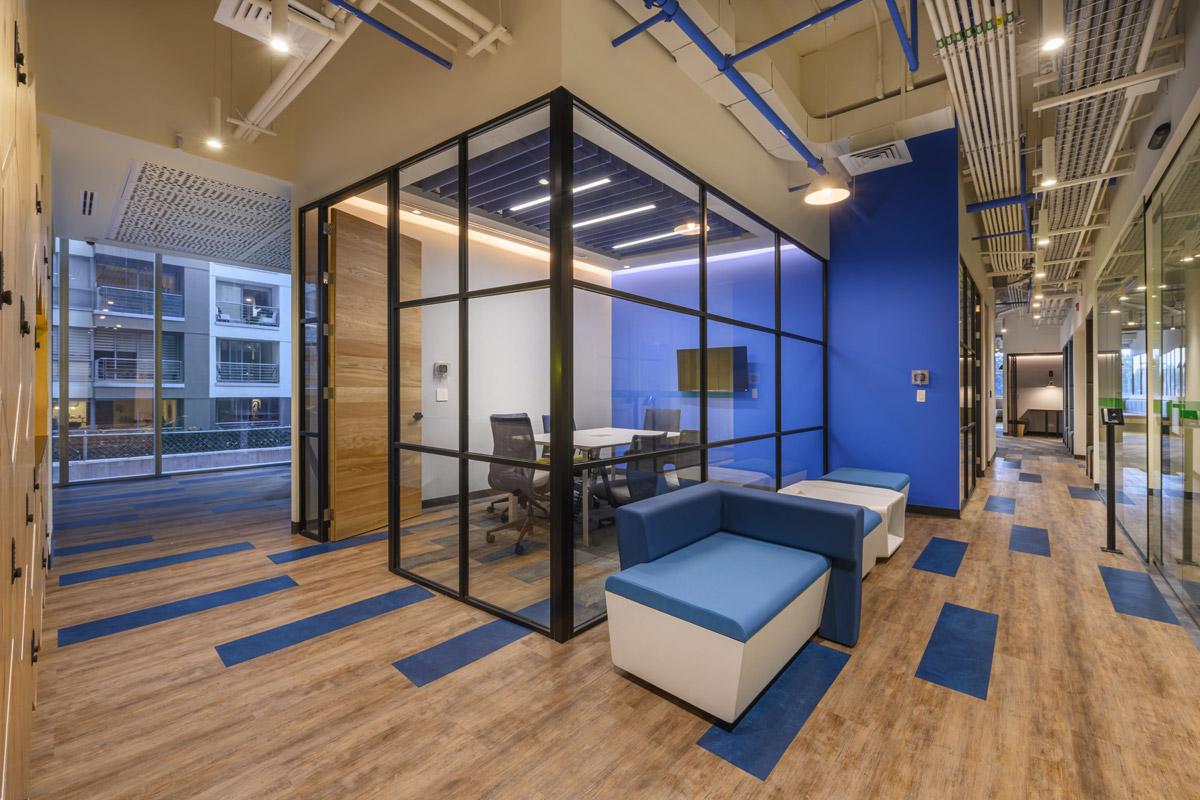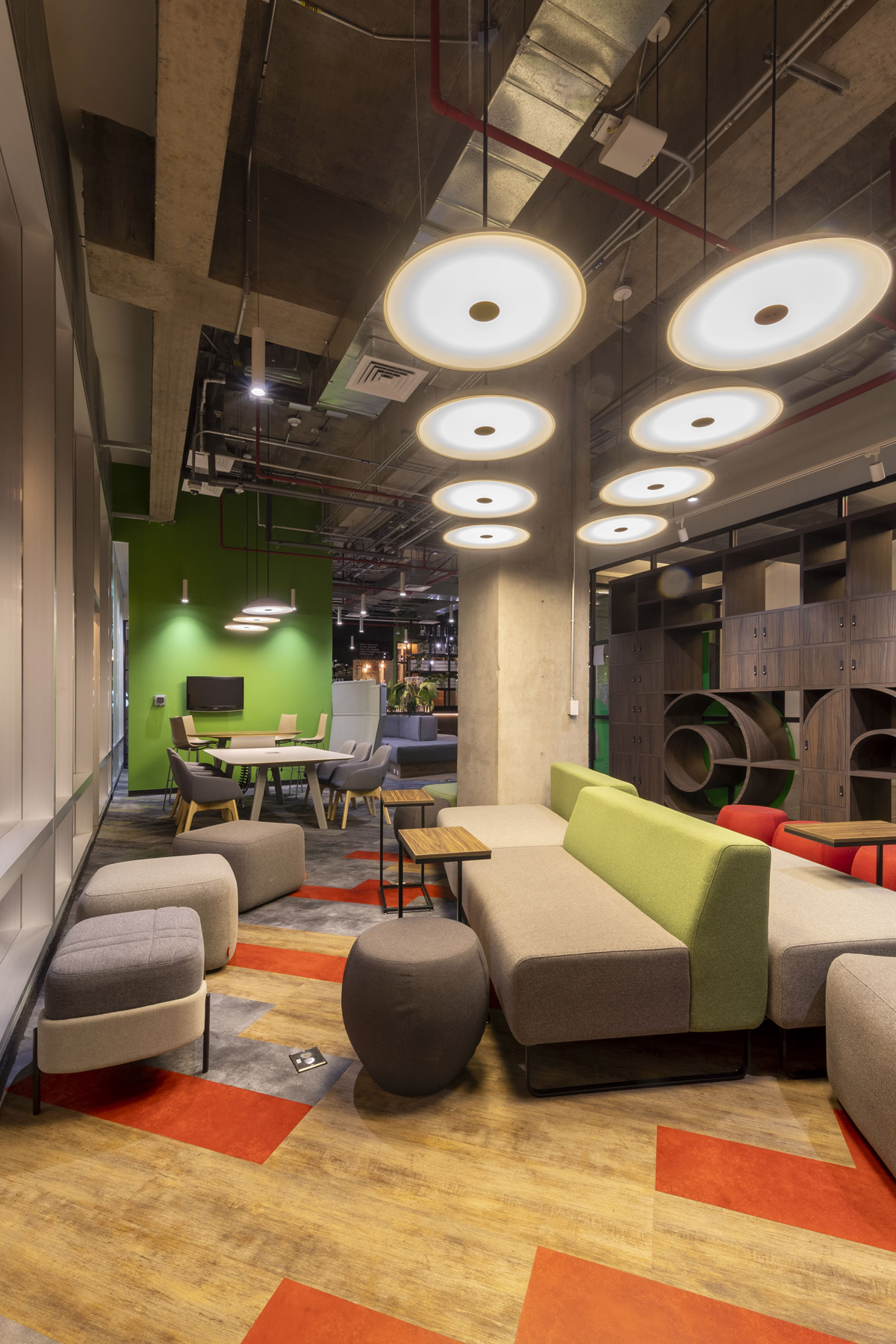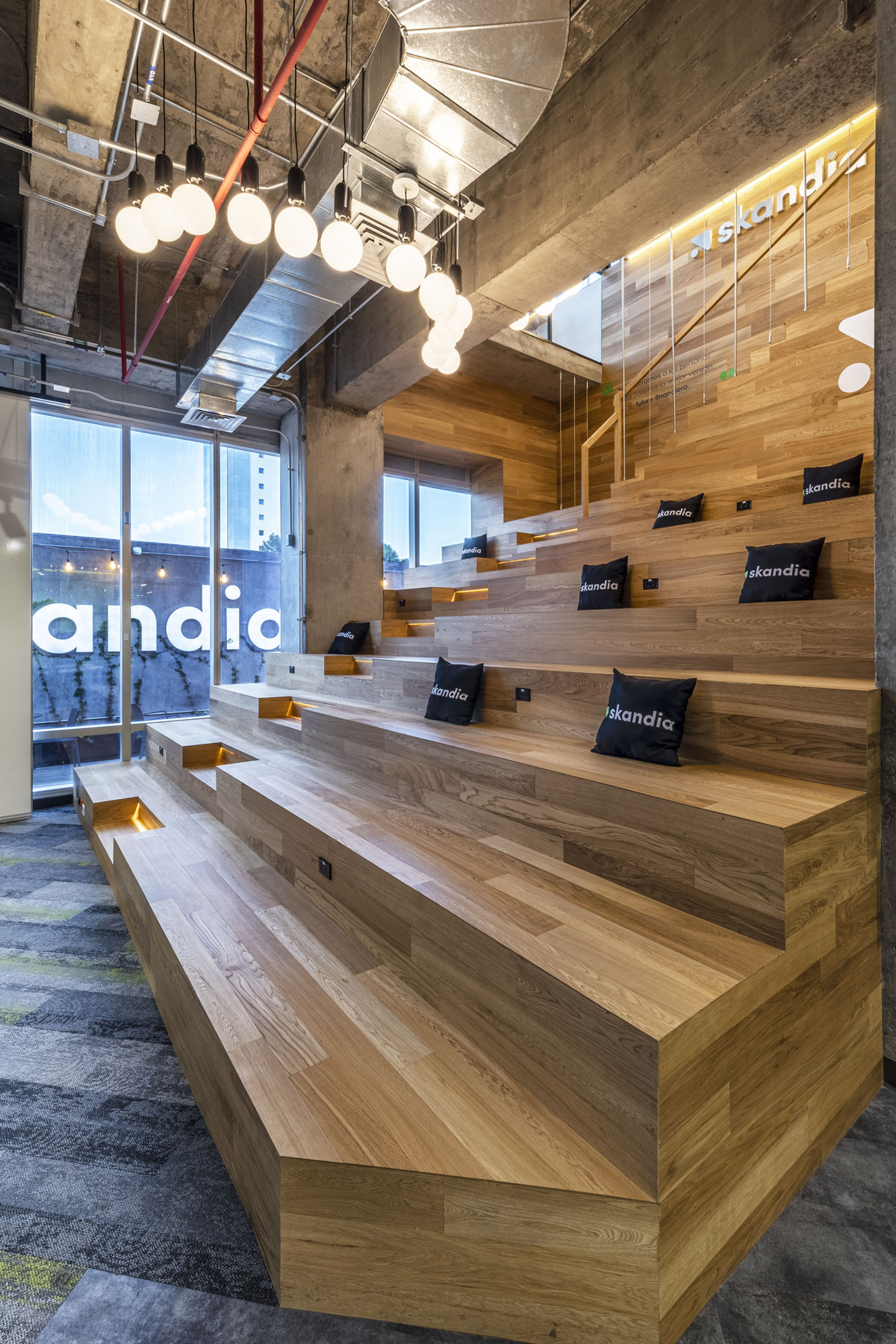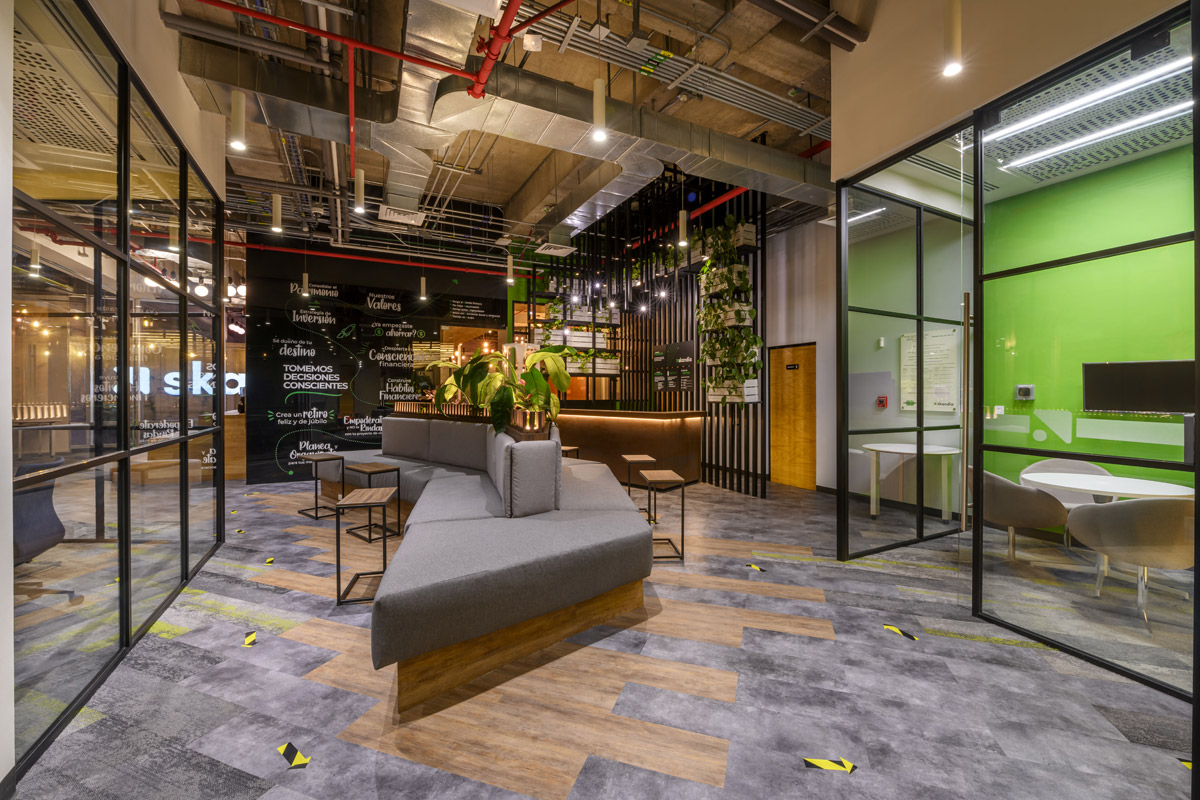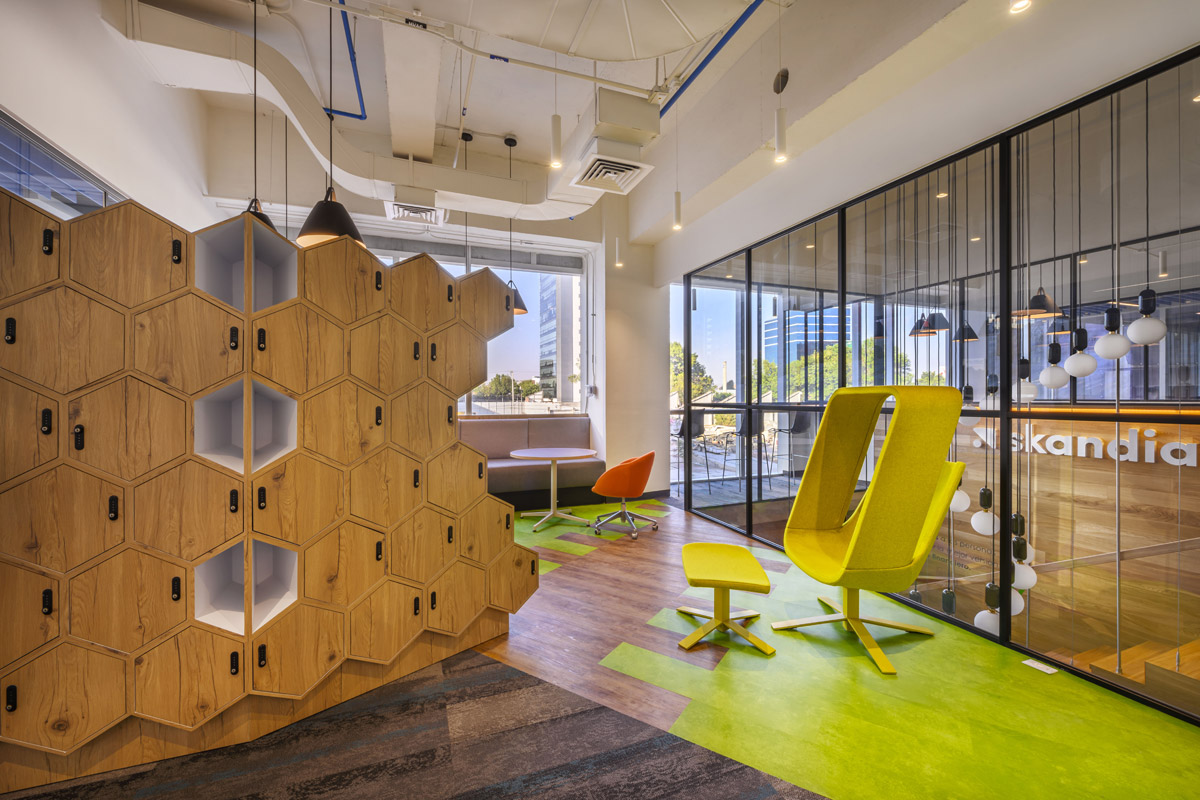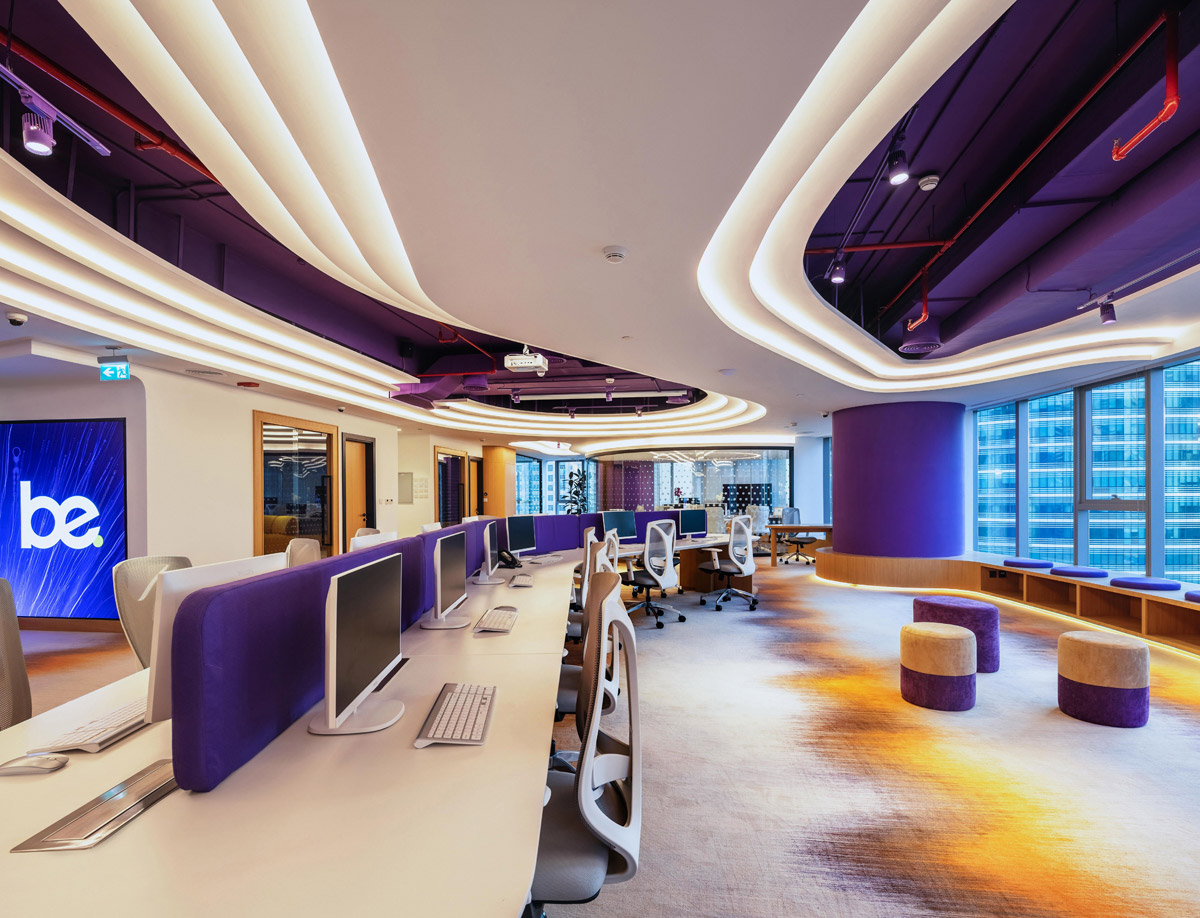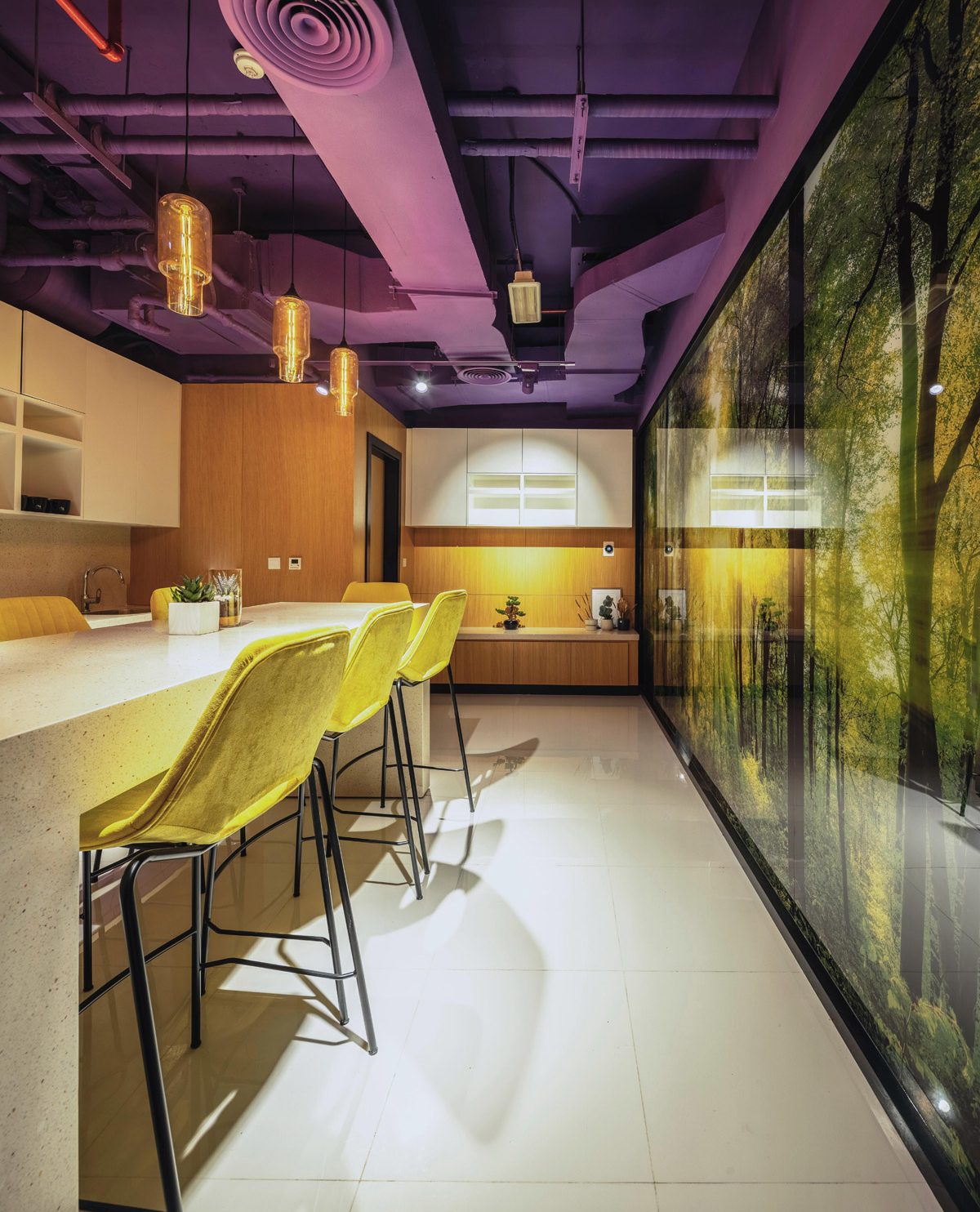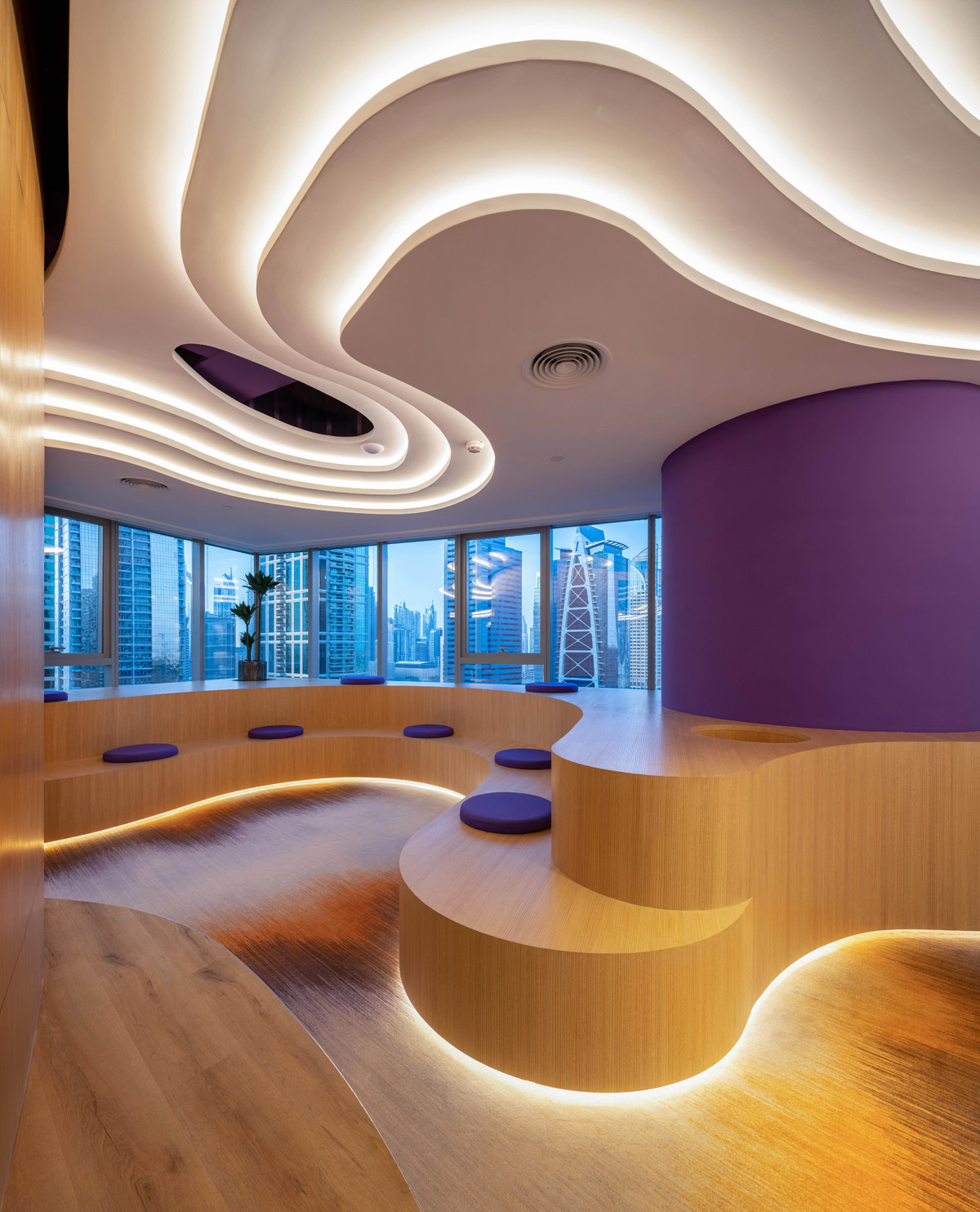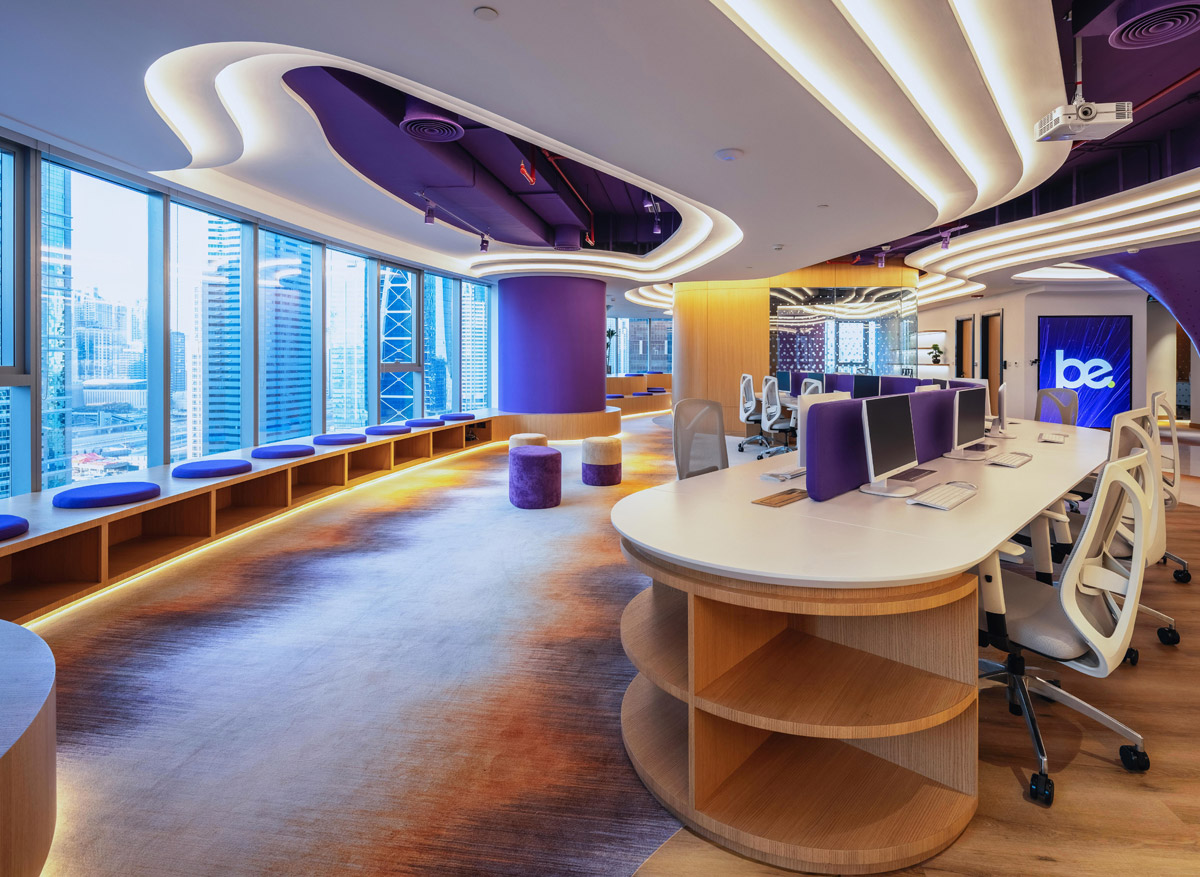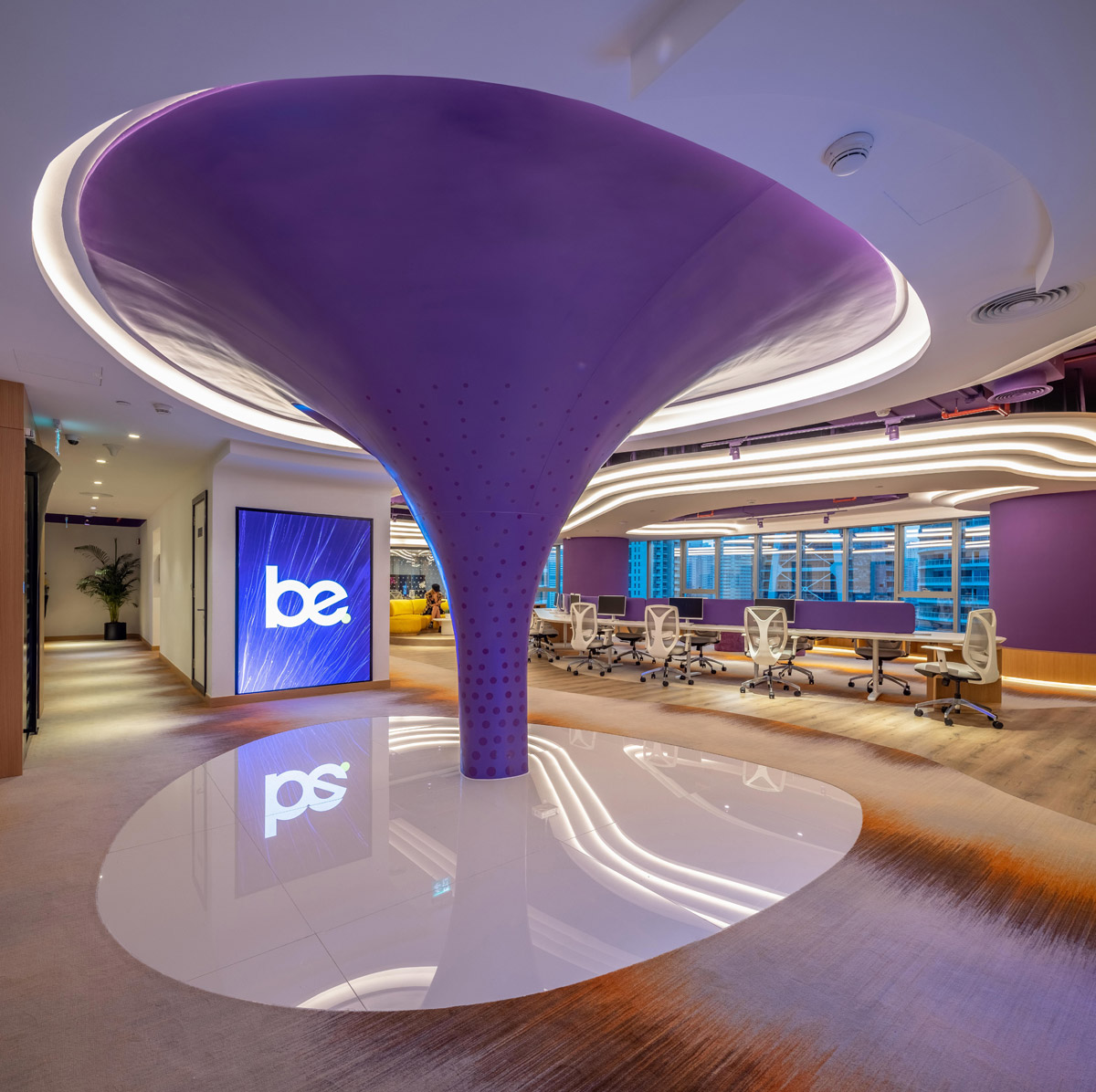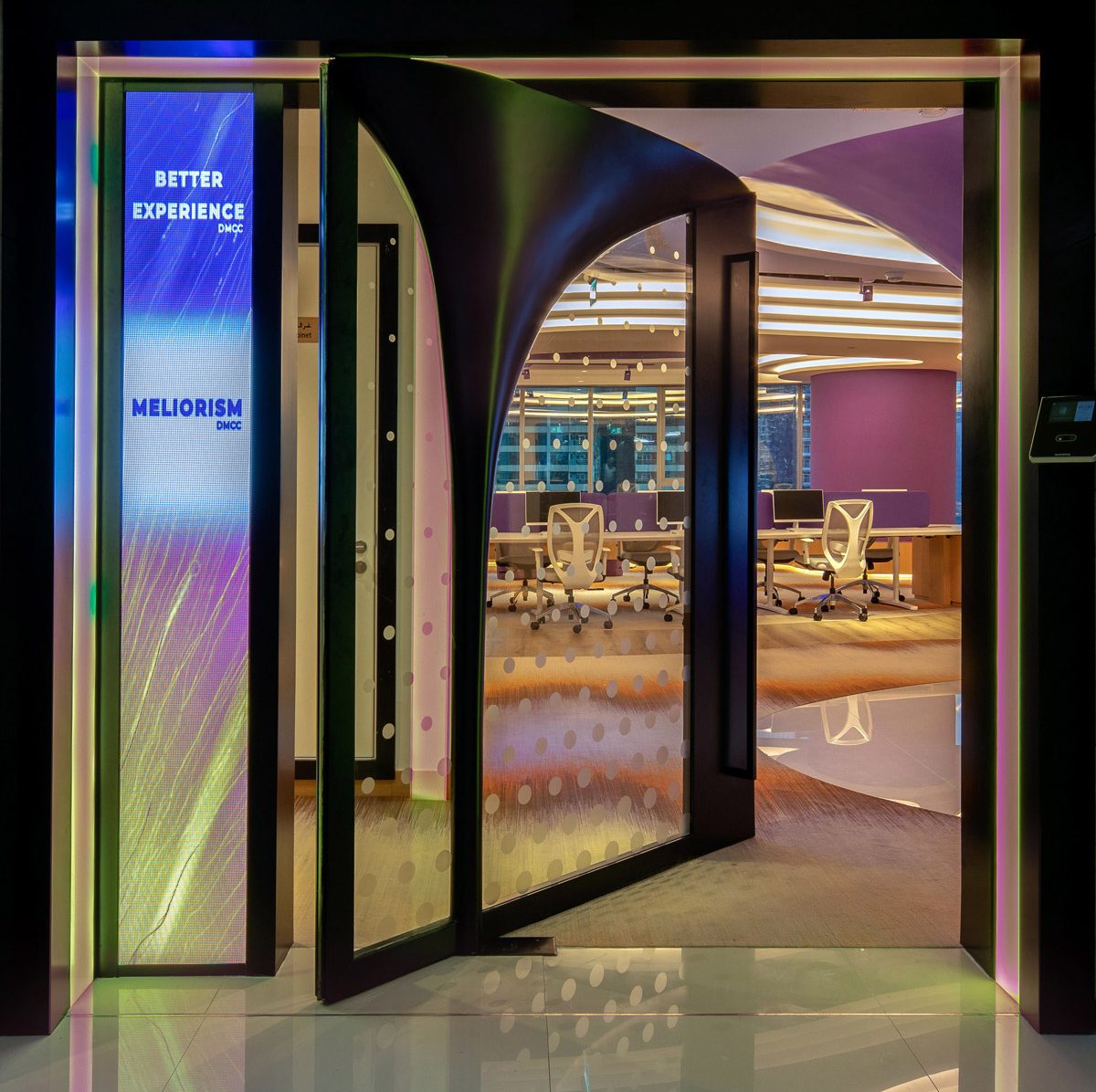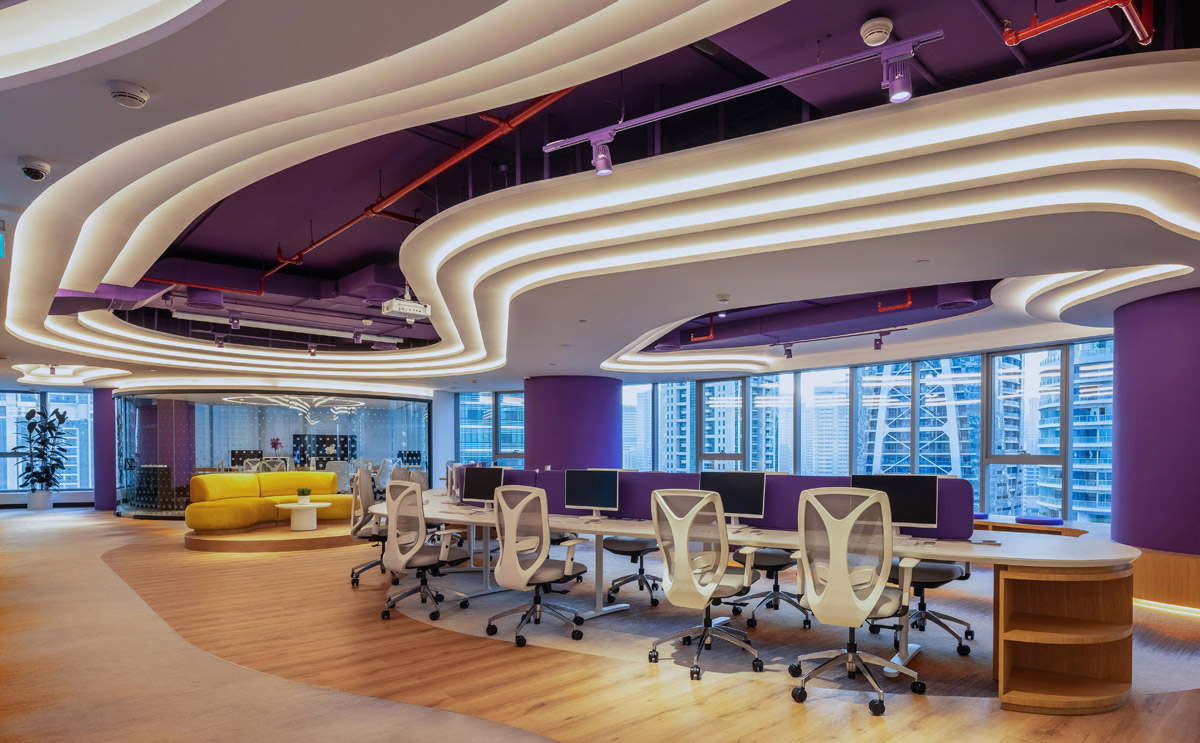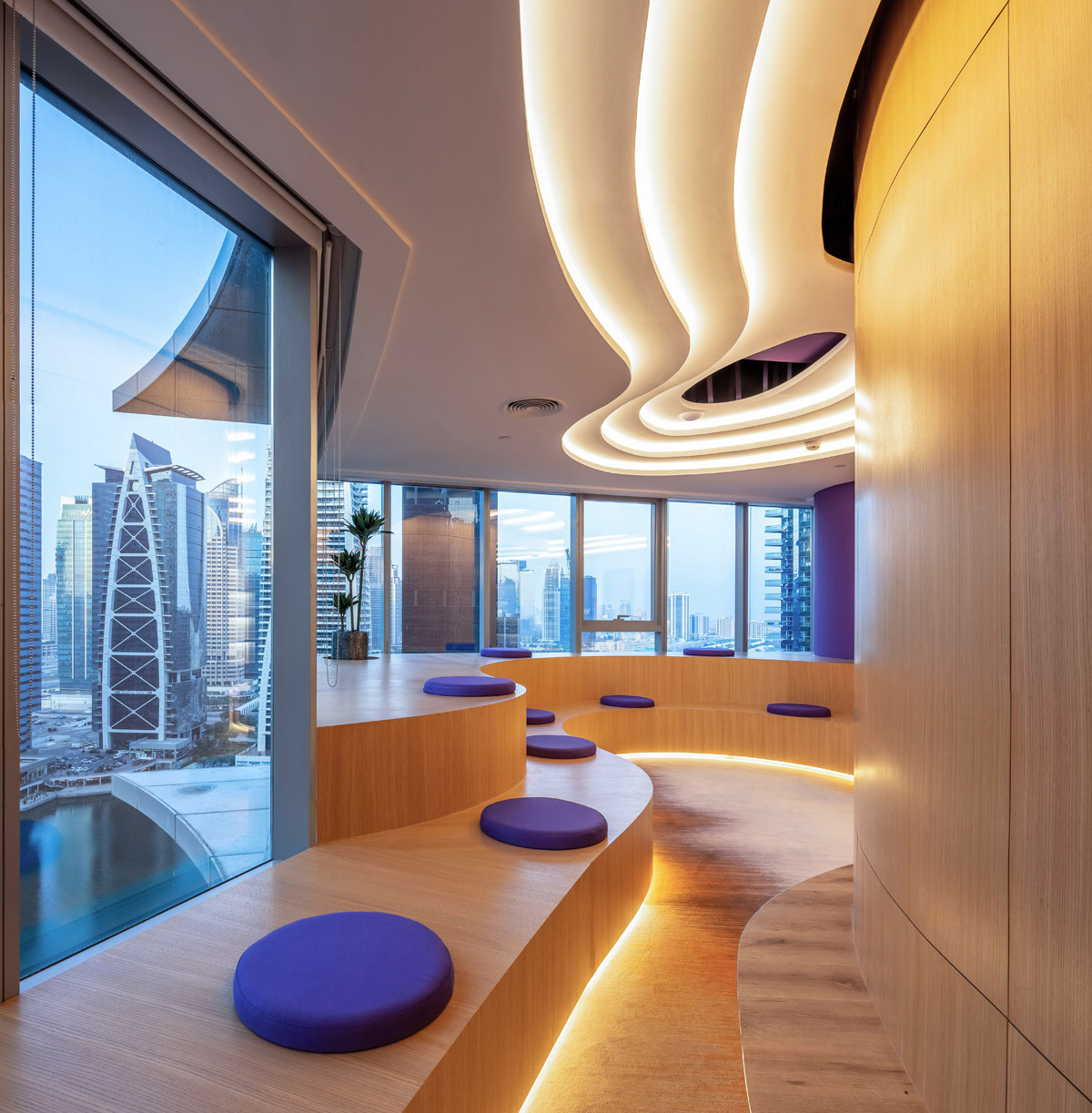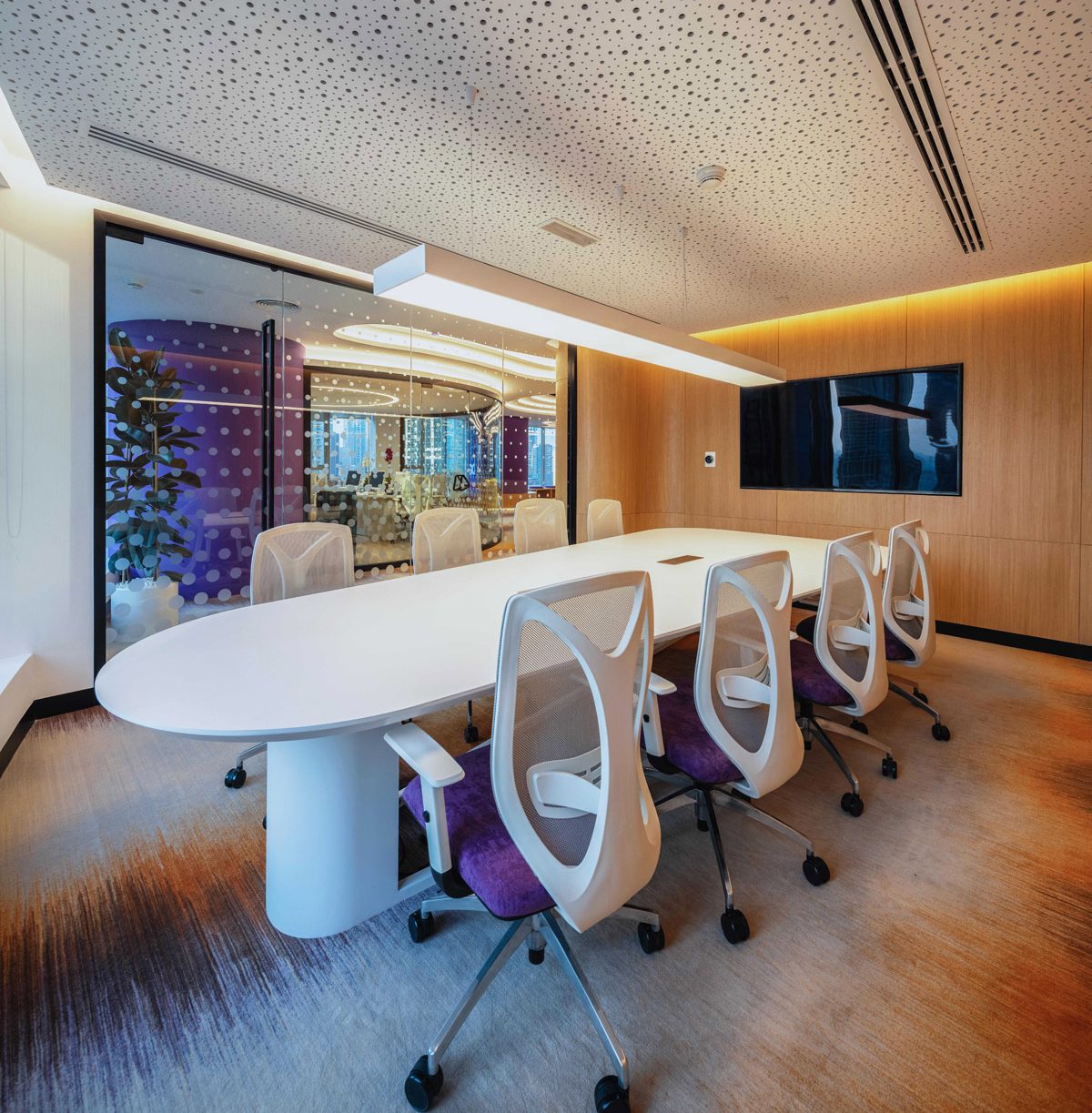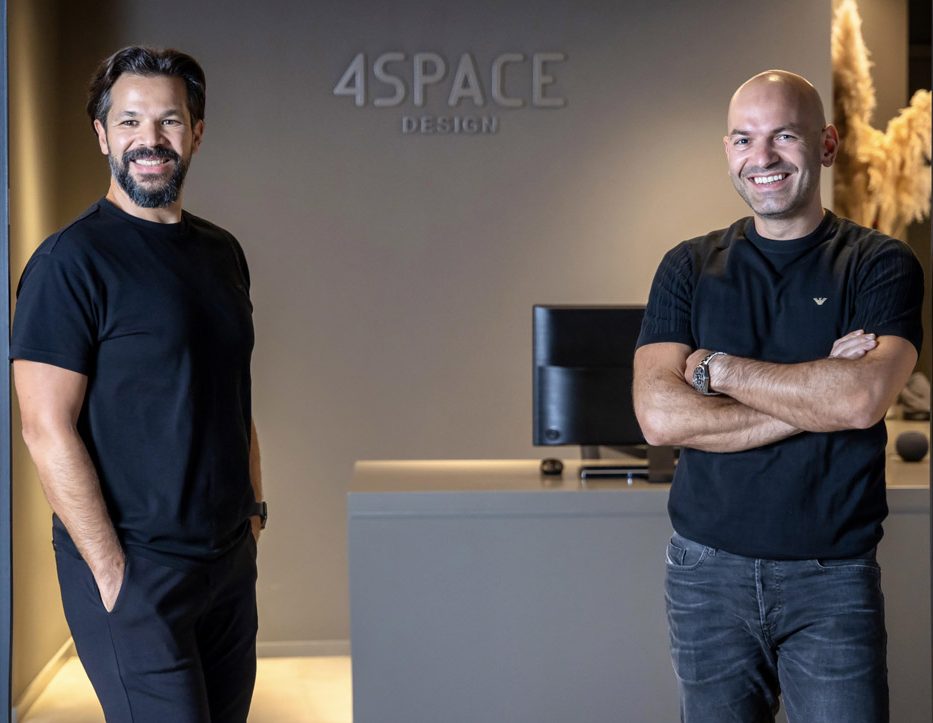This week’s instalment of Project of the Week series features a modern high-tech office and urban farm design by 2021 SBID Awards Finalist, Wolter & Yu.
Within a factory in an industrial district of Hong Kong is the future of farming - a high-tech urban aquaponics farm, sustainably growing high quality vegetables and flowers.
Part office and part grow room, the design takes the concept of flexibility and mobility to the extreme: Ceiling-mounted, bi-folding glass panels create a private meeting room when needed, but opens up the whole room for other needs. Dry erasable paint, is applied across the entire office wall, facilitating the free flow of ideas. Height-adjustable desks and ergonomic chairs create comfort for employees, behind HDTVs displaying operational metrics.
The plant room uses 3D printed plant walls mounted onto movable archival track shelves to create dense vertical grow farms. Nutrient rich water from a fish tank and electricity to power perpendicular panels of light are funnelled across the ceiling and down each movable shelf. This allows the farm to adjust the distance between each light panel according to the requirement of different types of vegetation, while excess water is filtered and returned to the fish tank, creating a closed ecosystem. The result is a sustainable, compact, flexible office and urban farm design. You can view a virtual tour here.
SBID Awards Category: Office Design
Practice: Wolter & Yu
Project: Full Nature
Location: Hong Kong, Hong Kong S.A.R.
